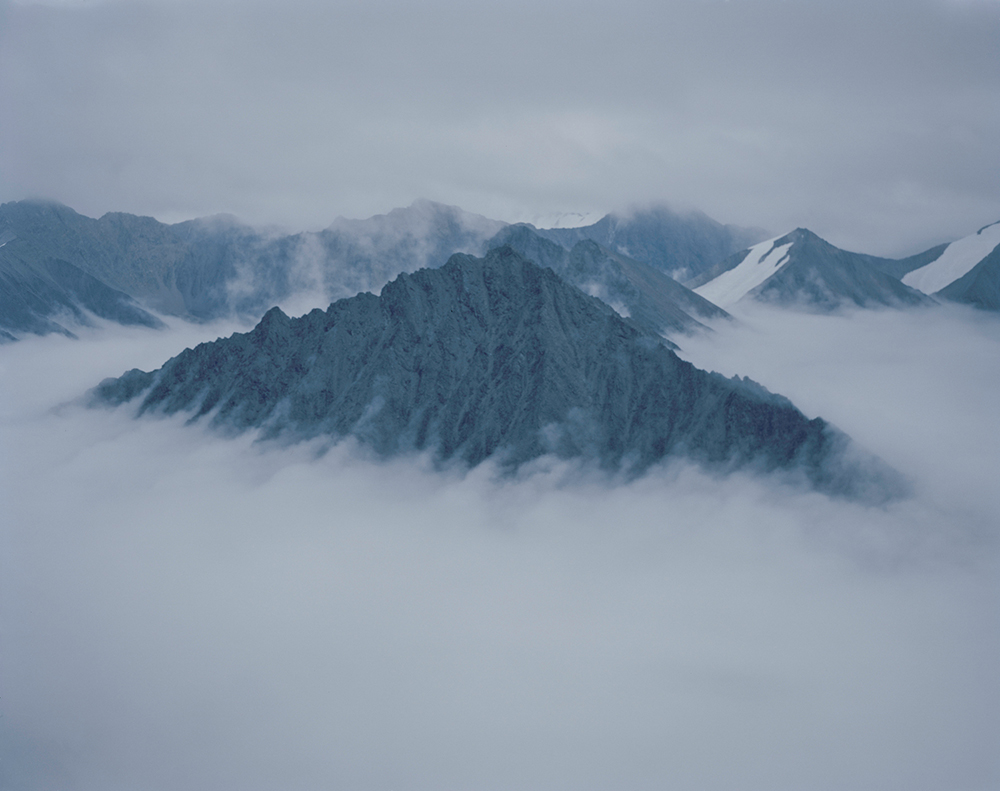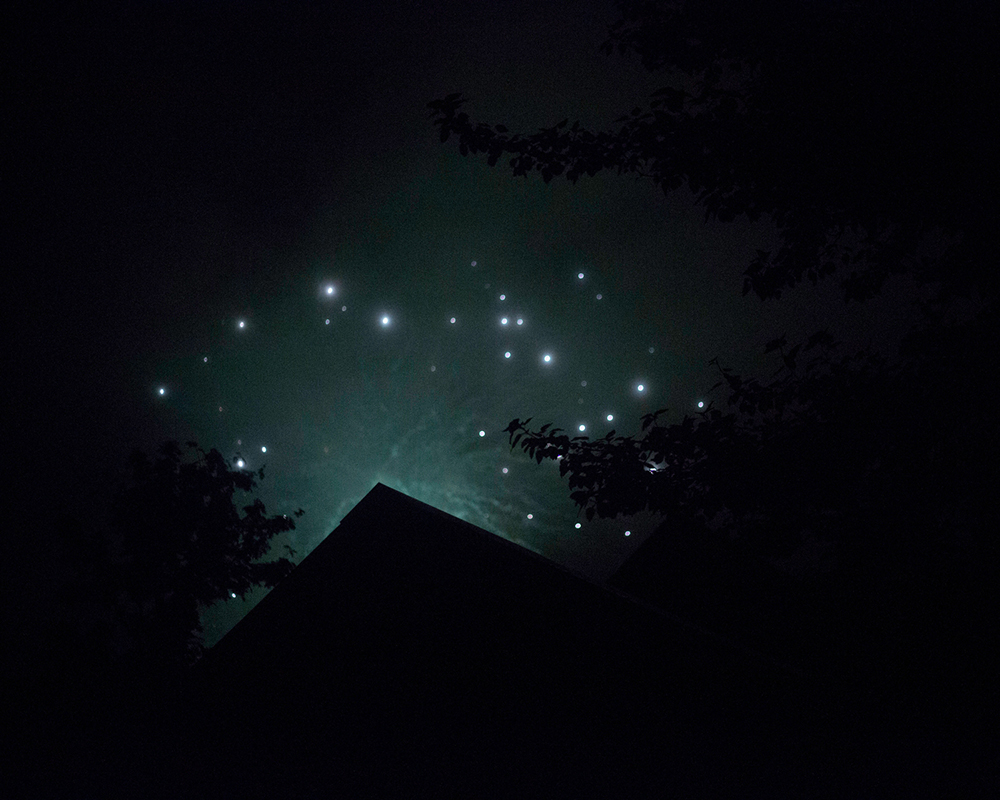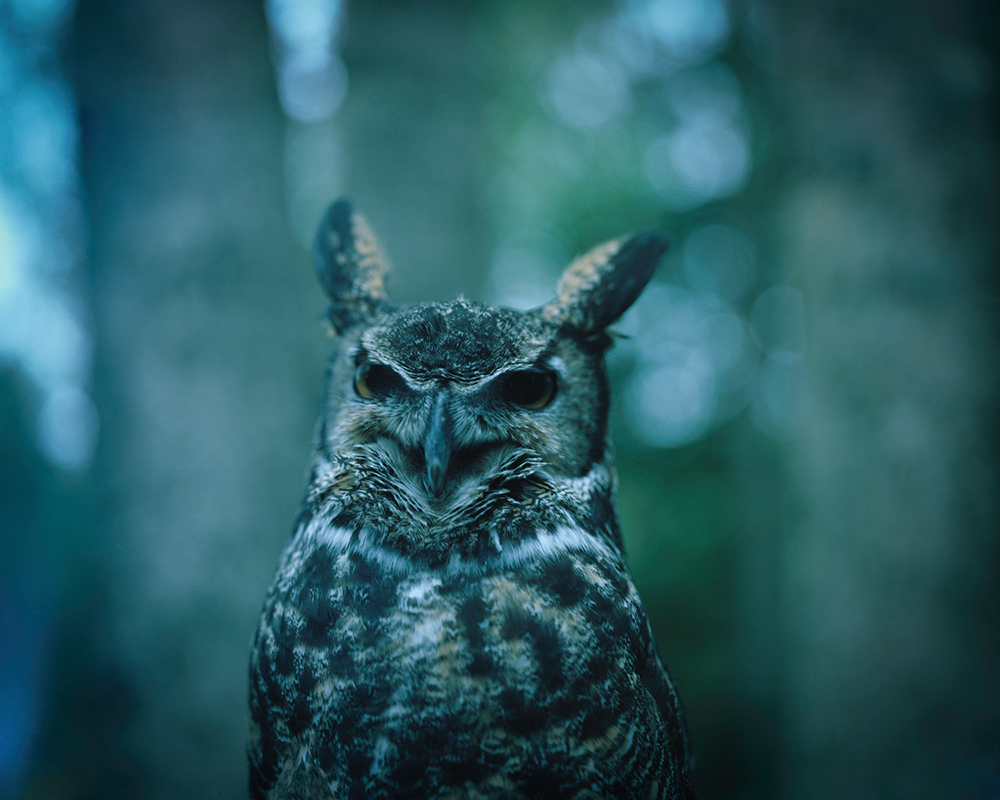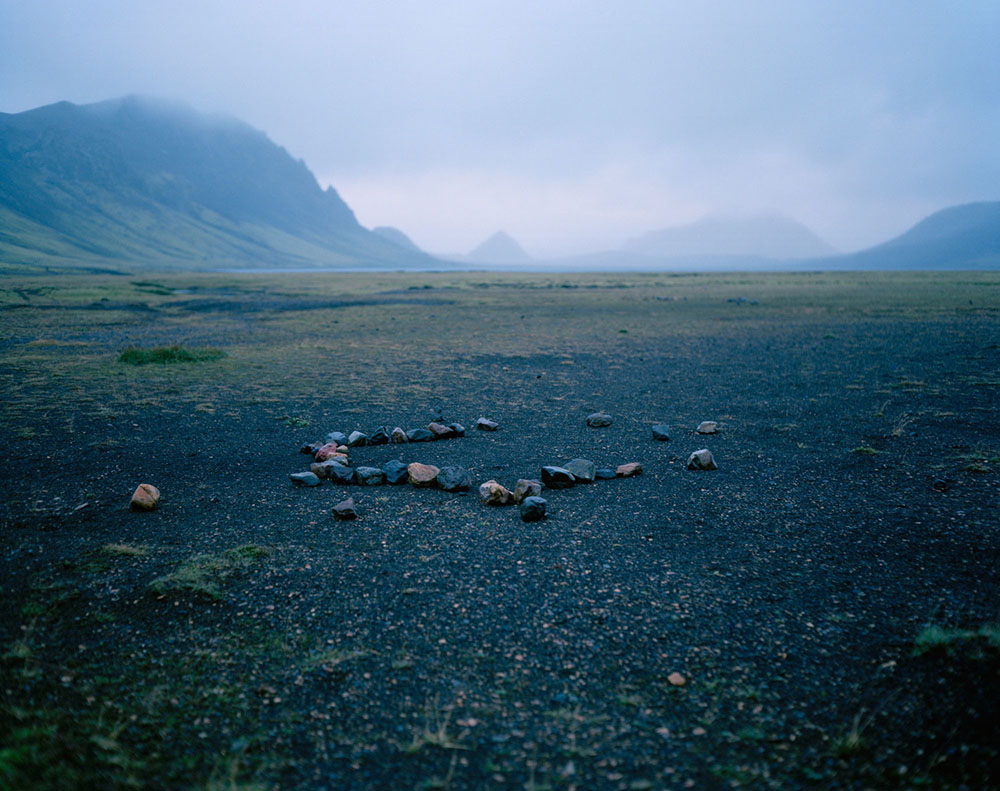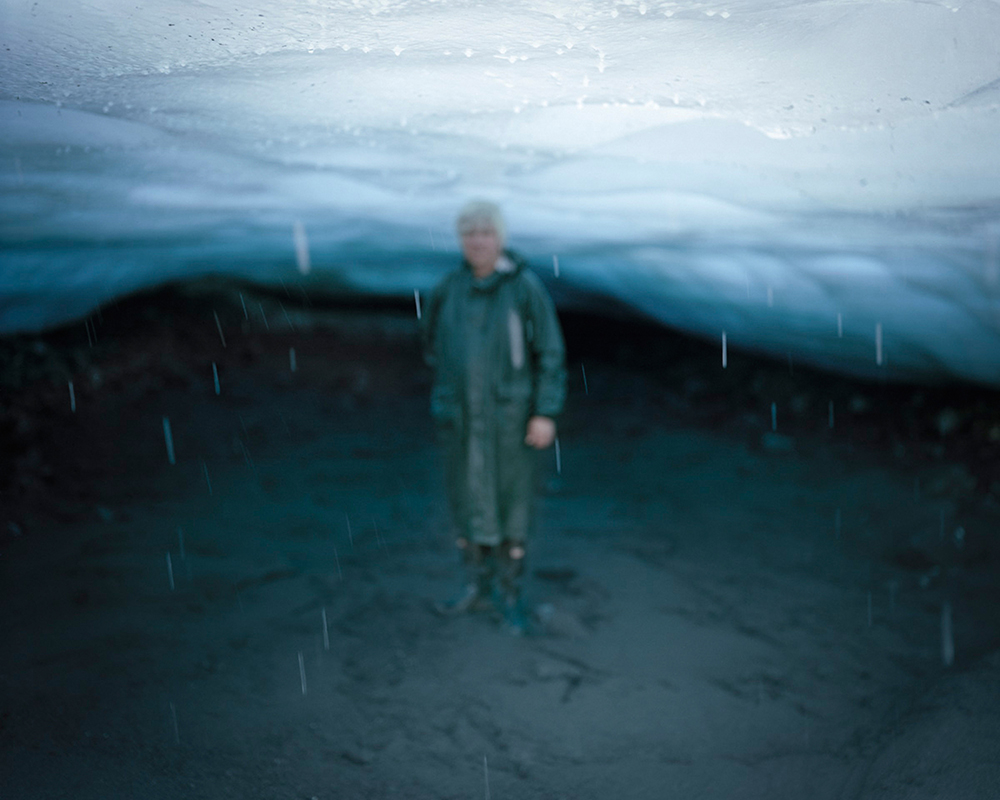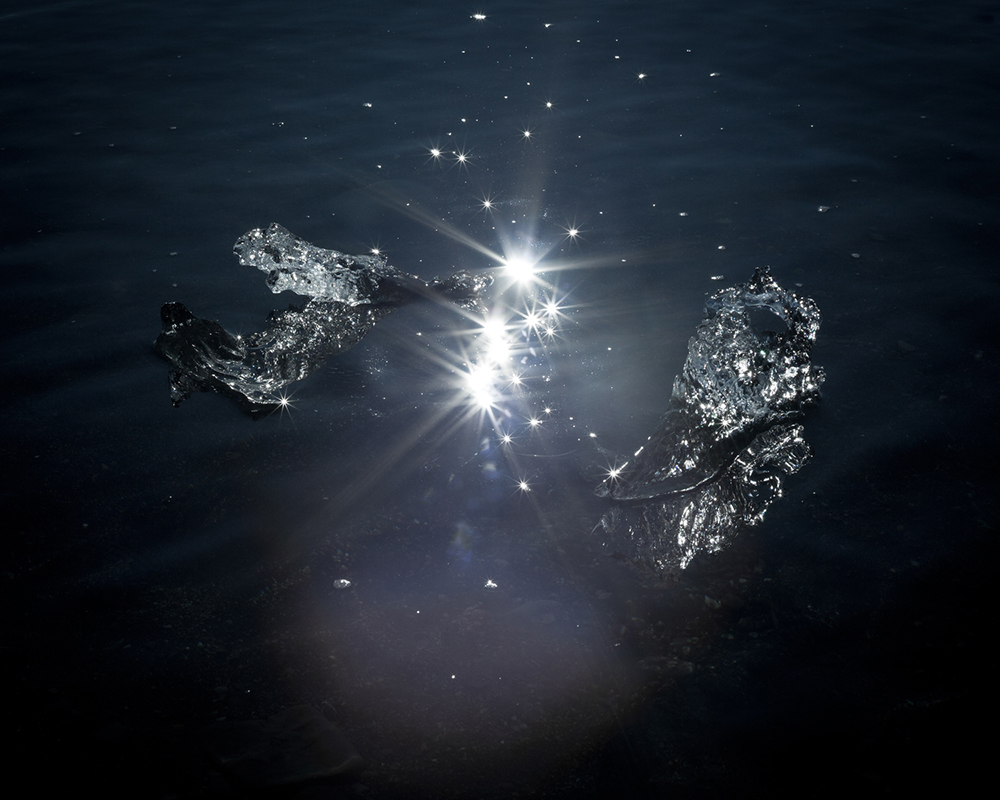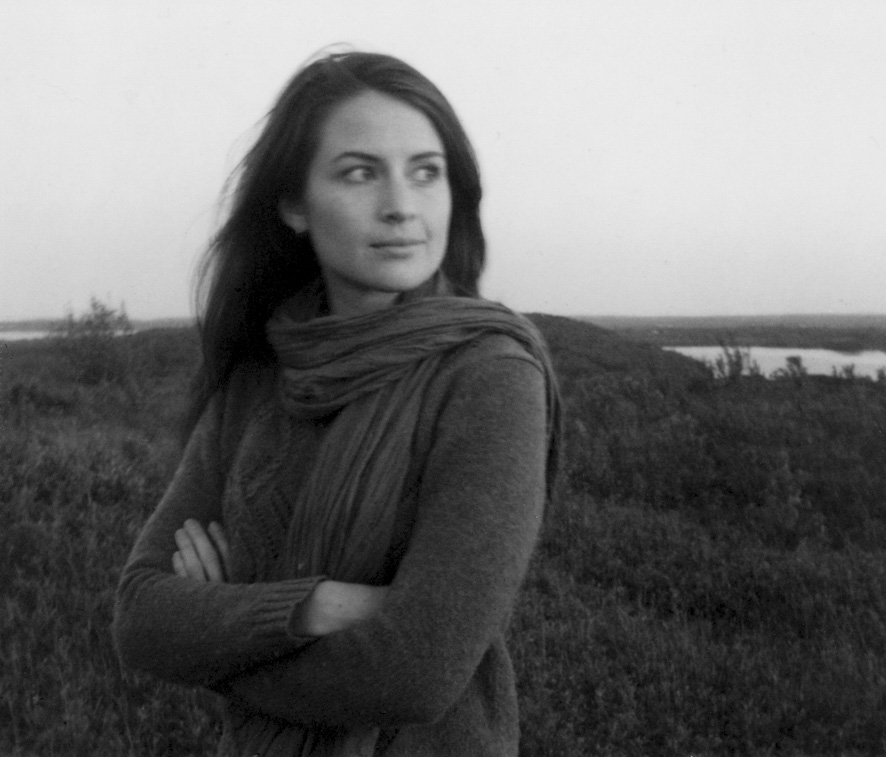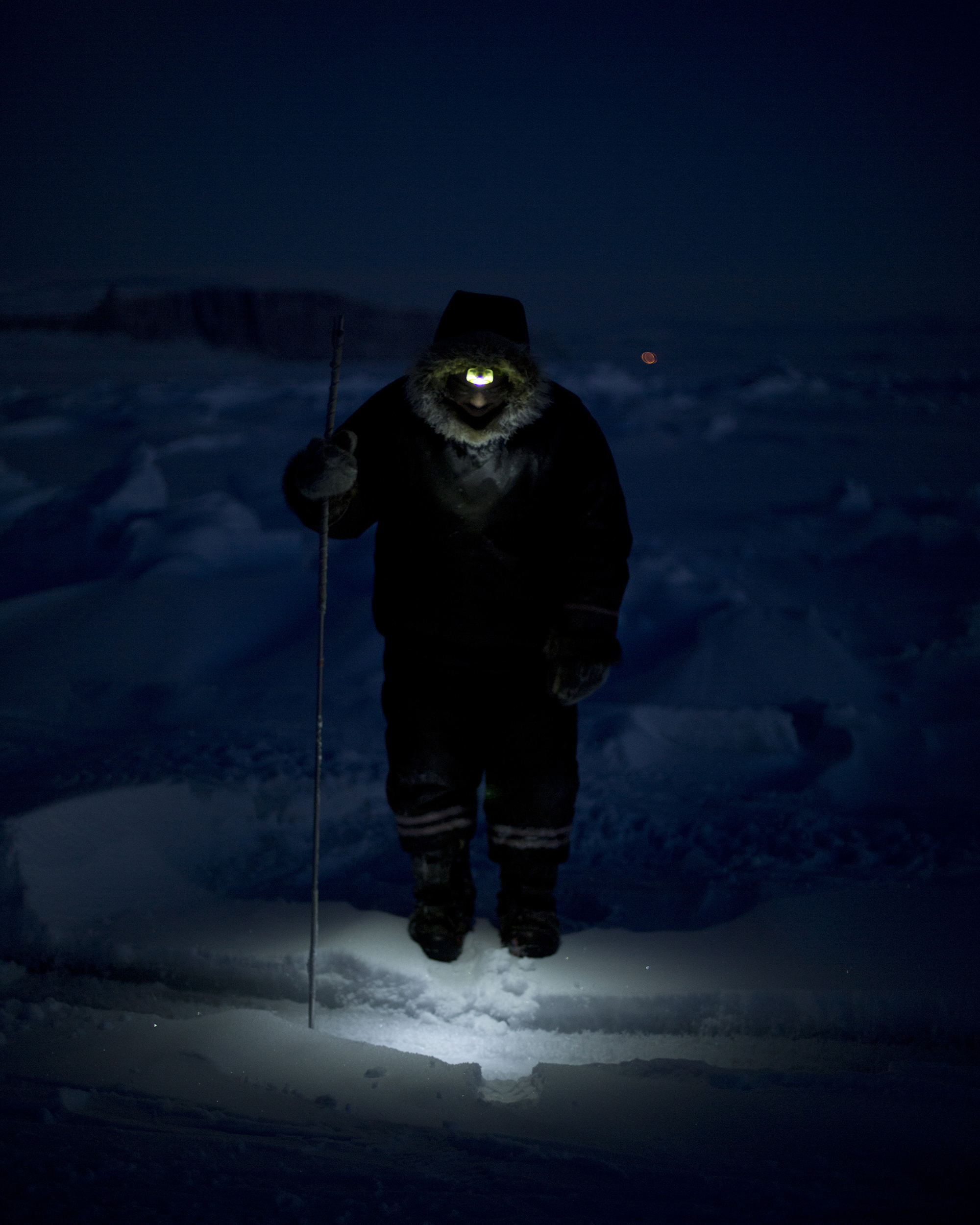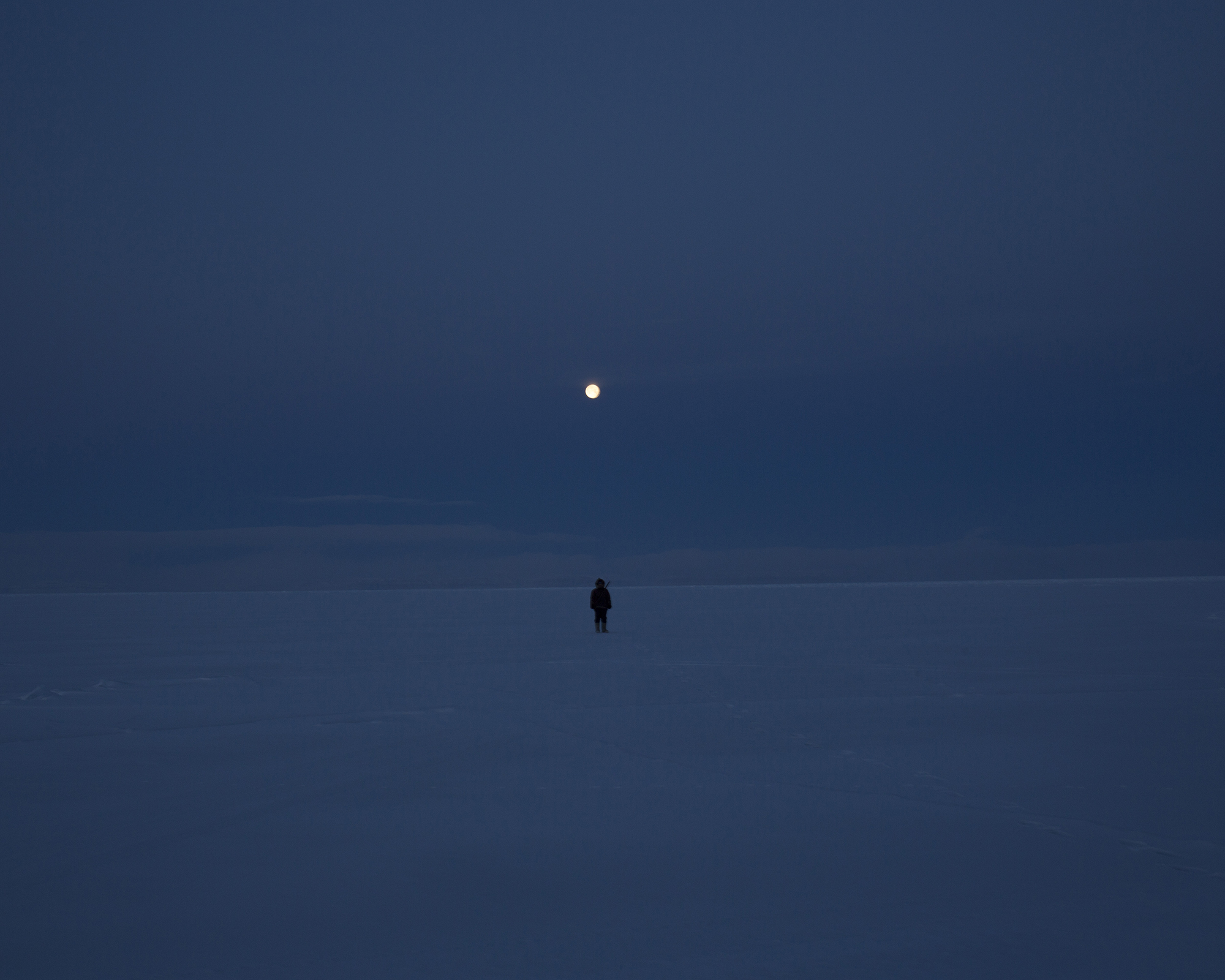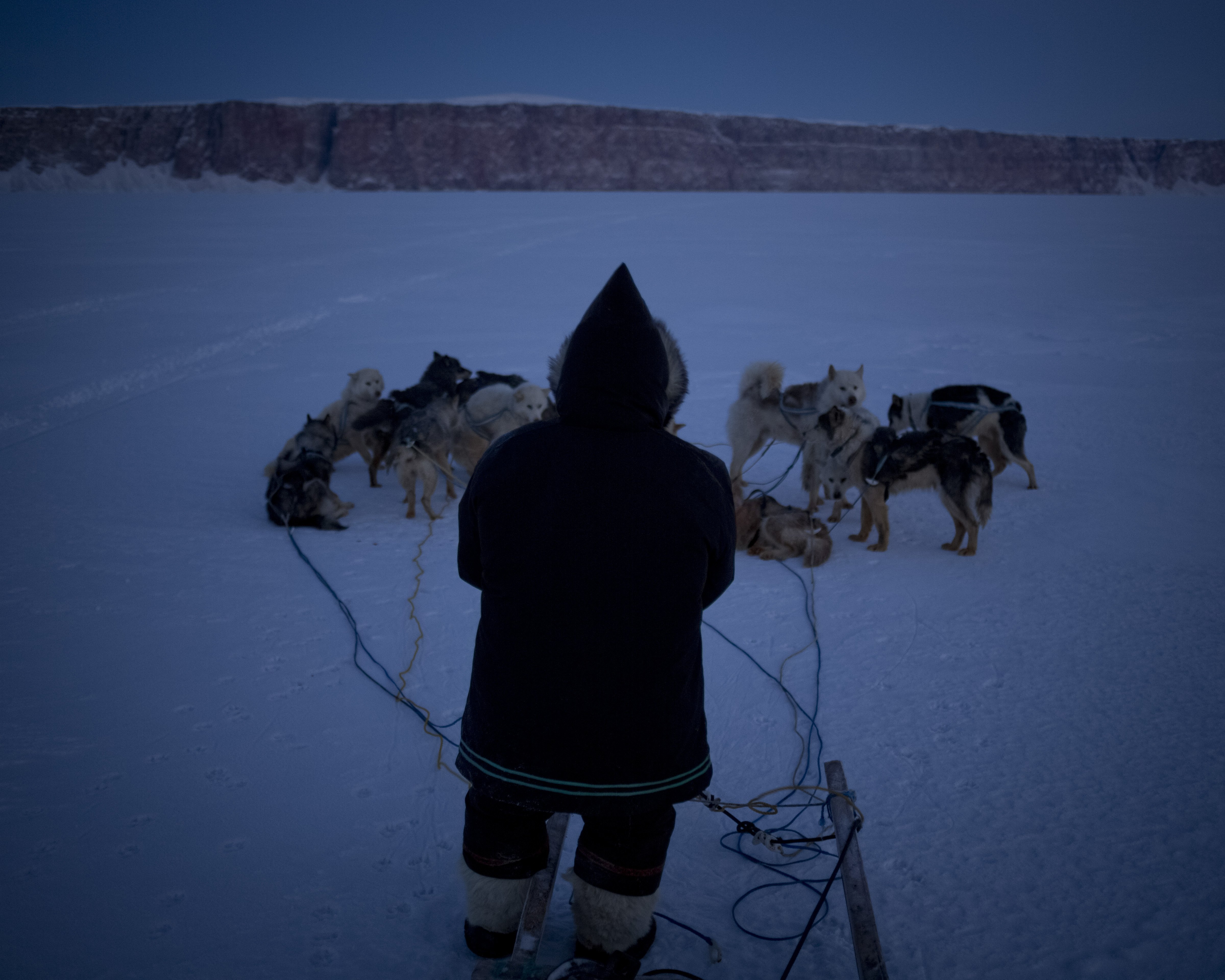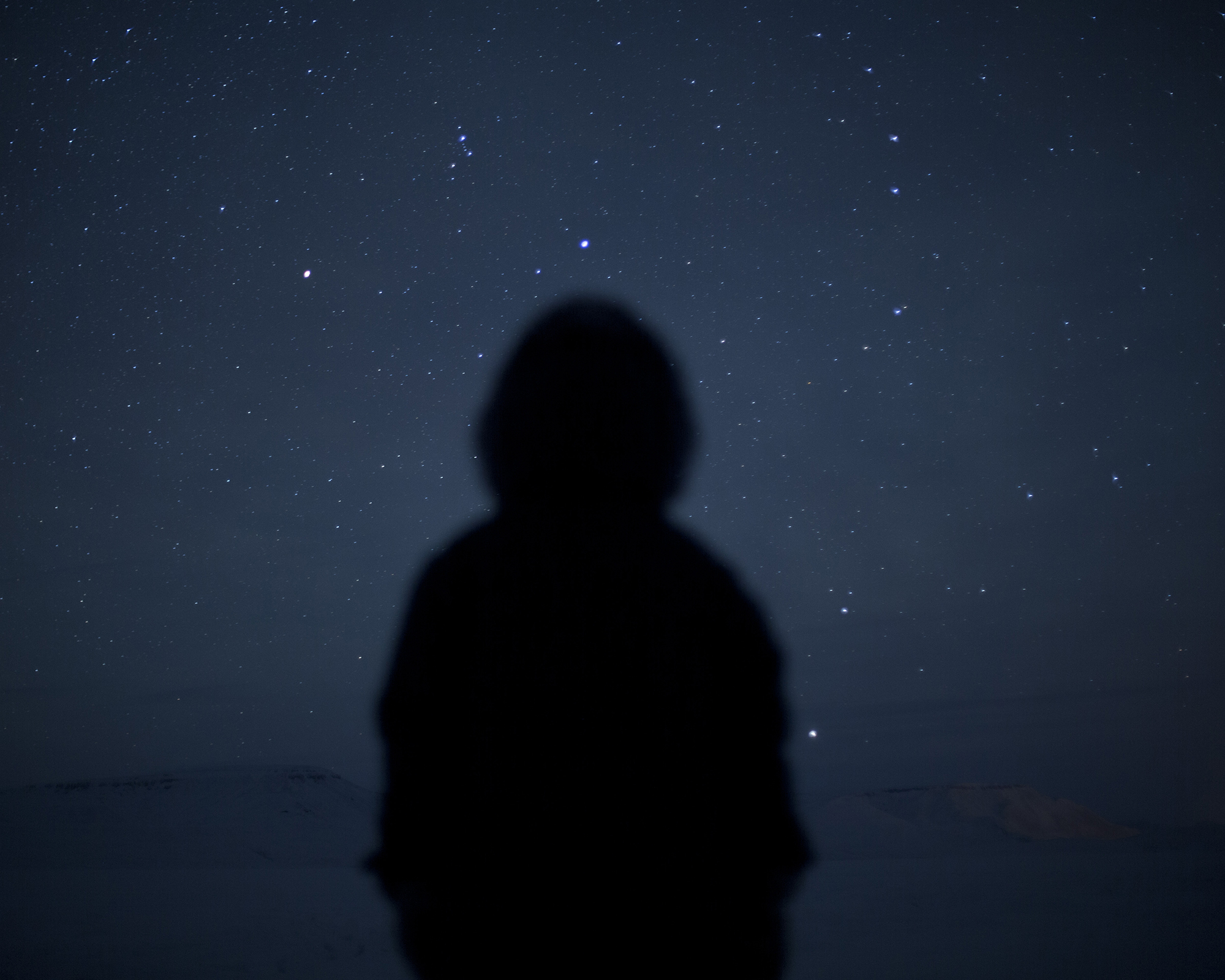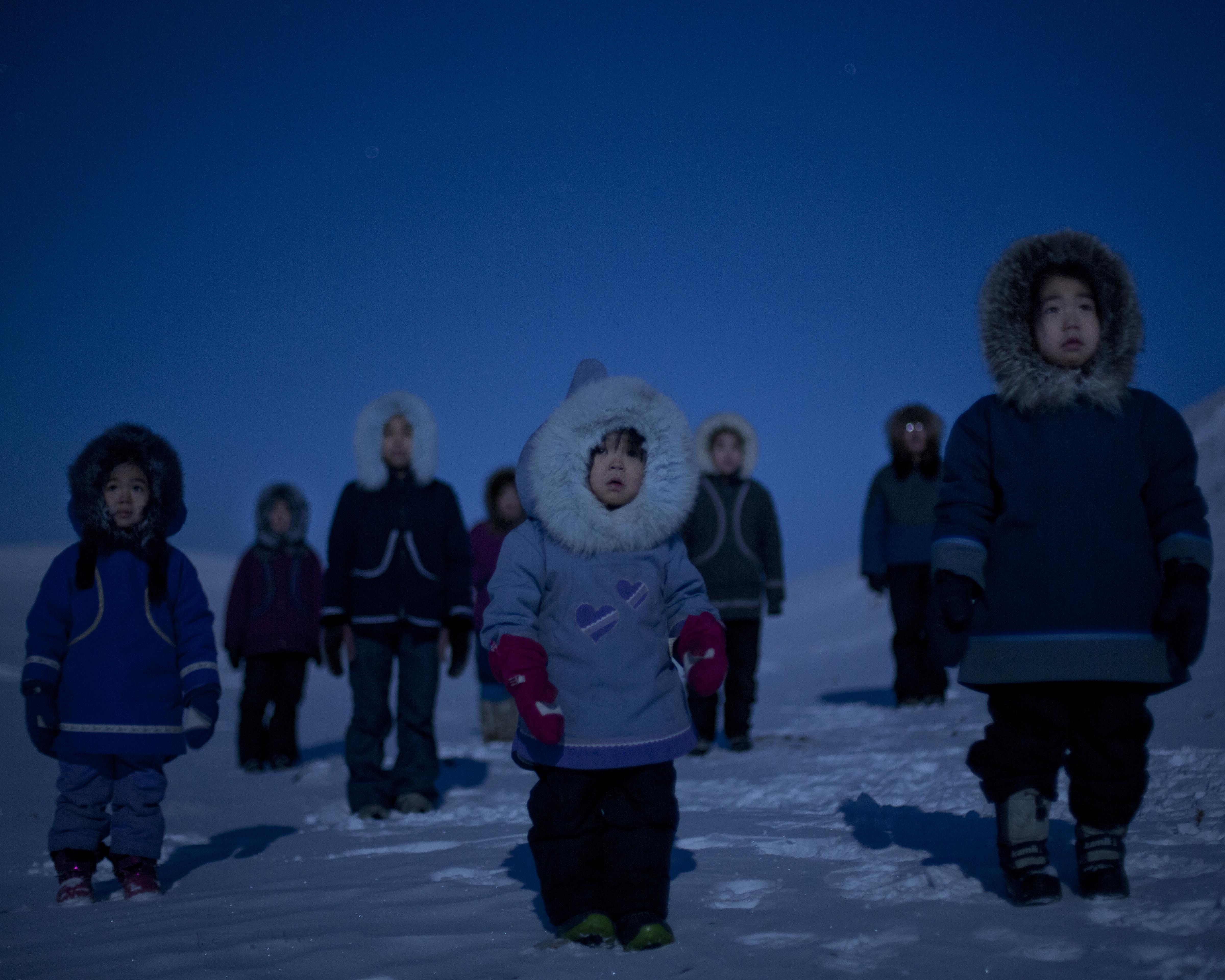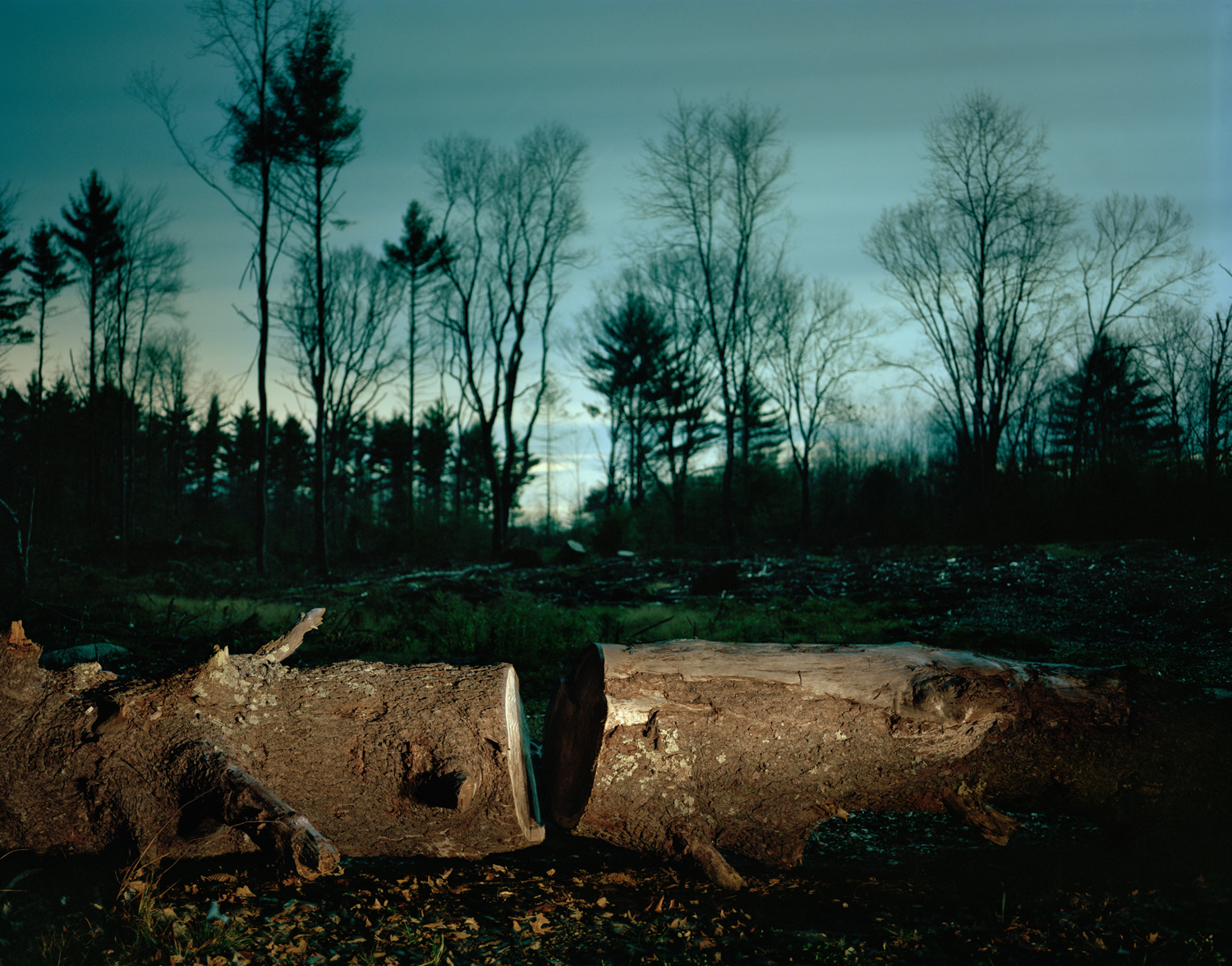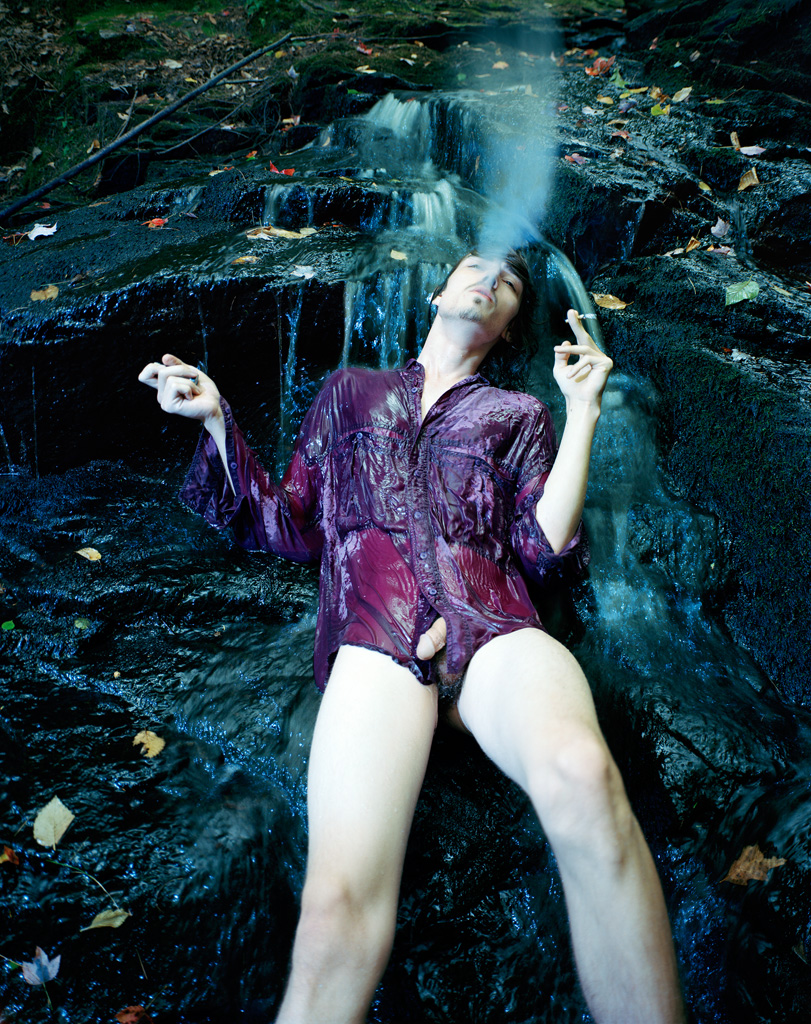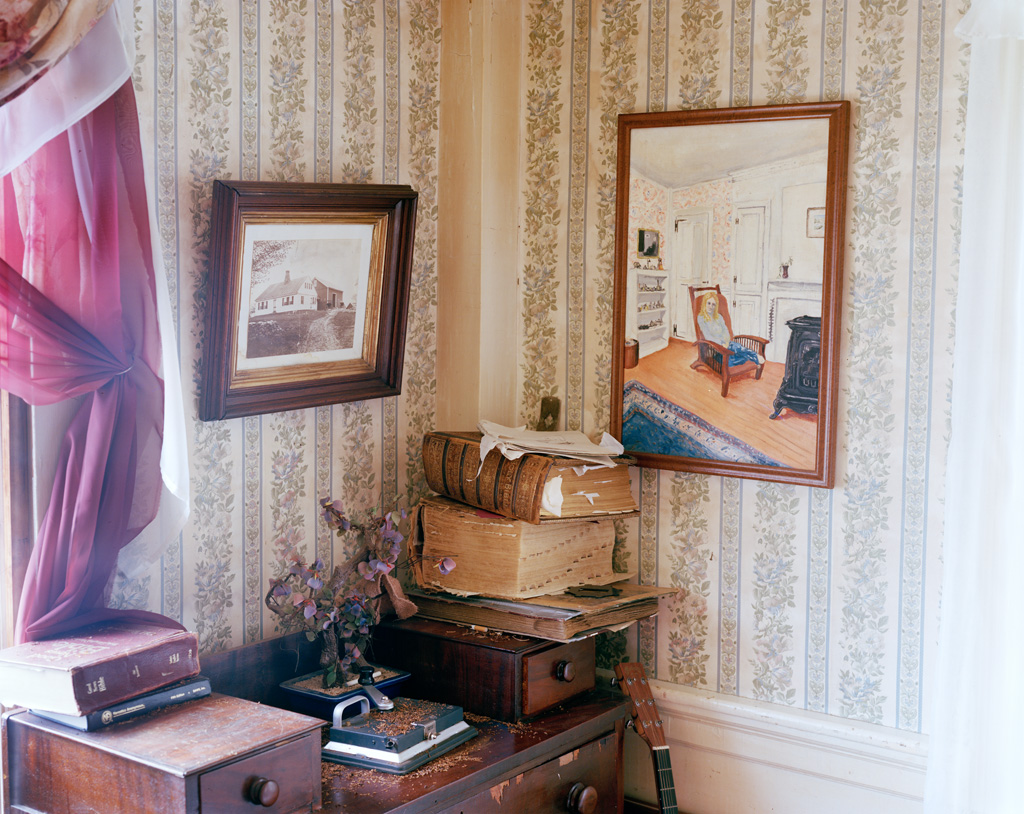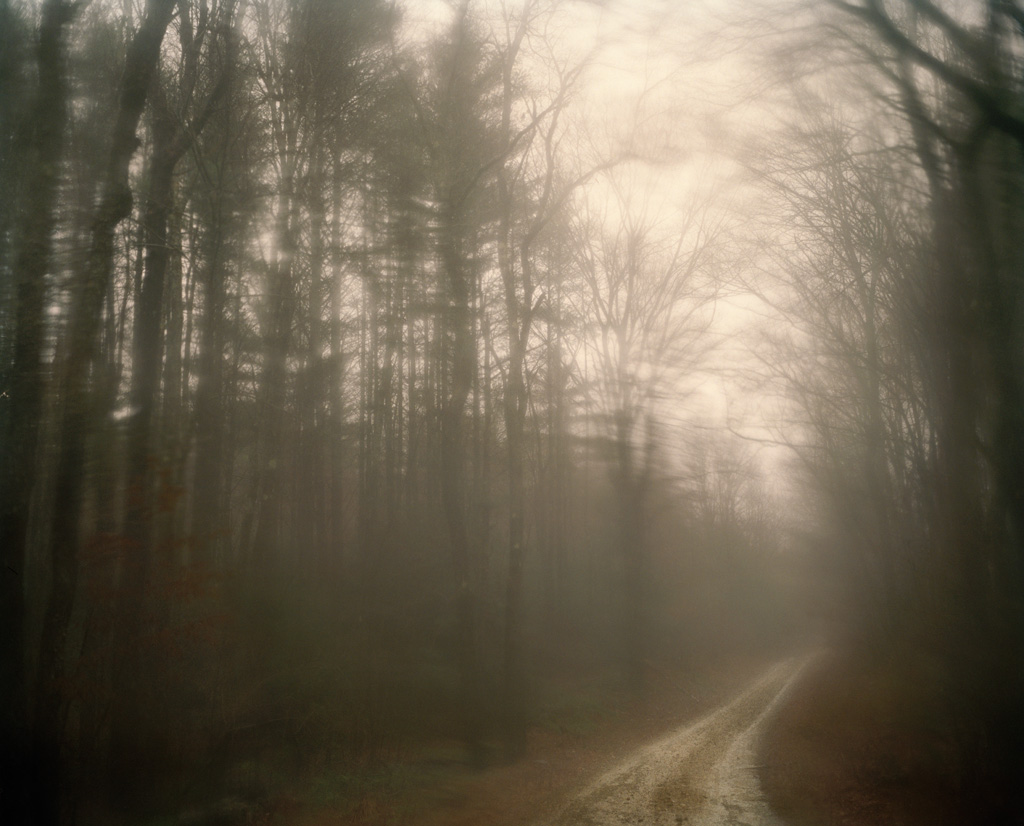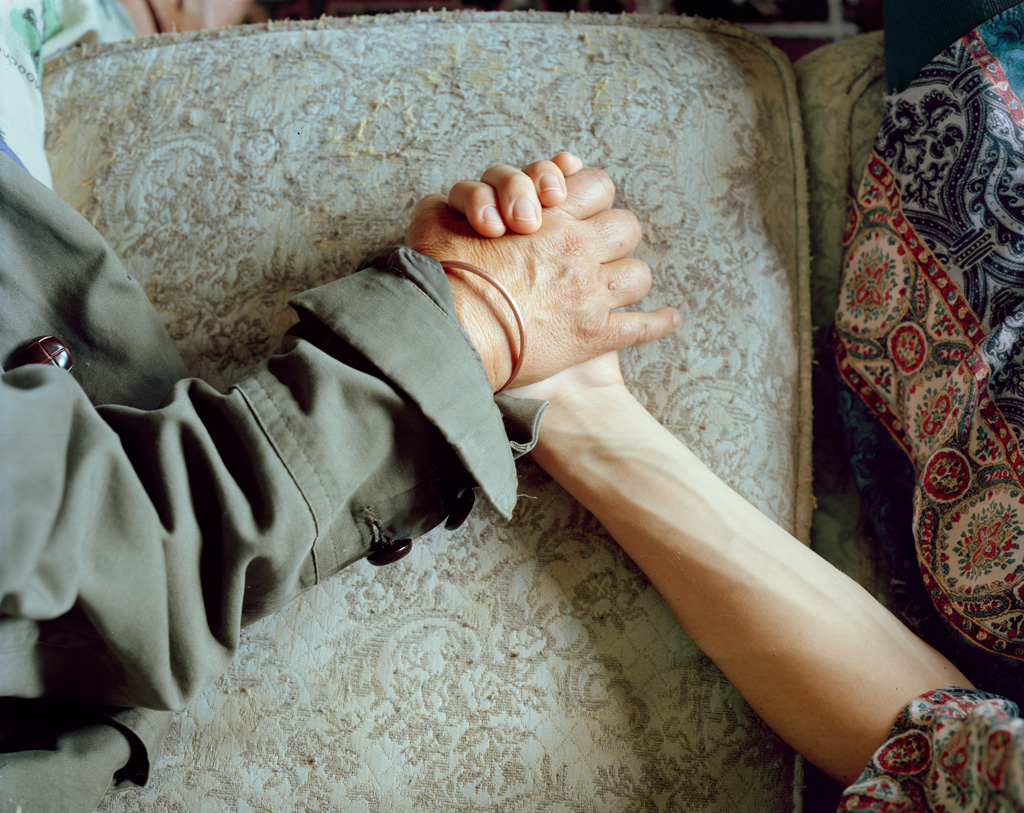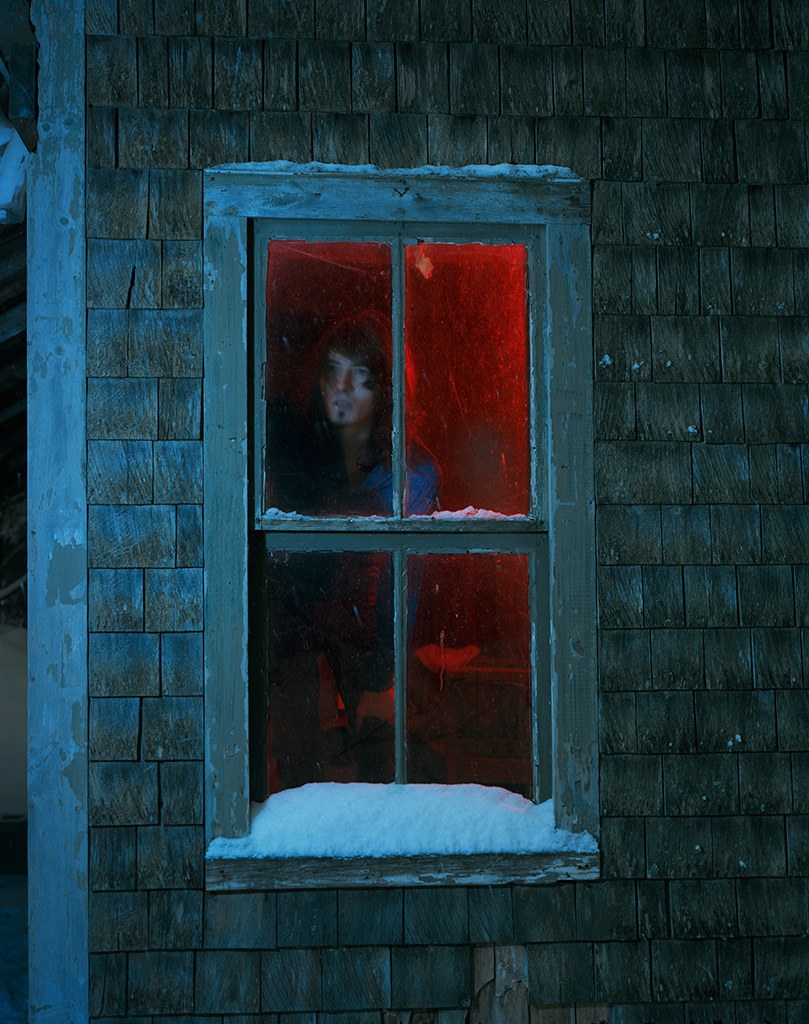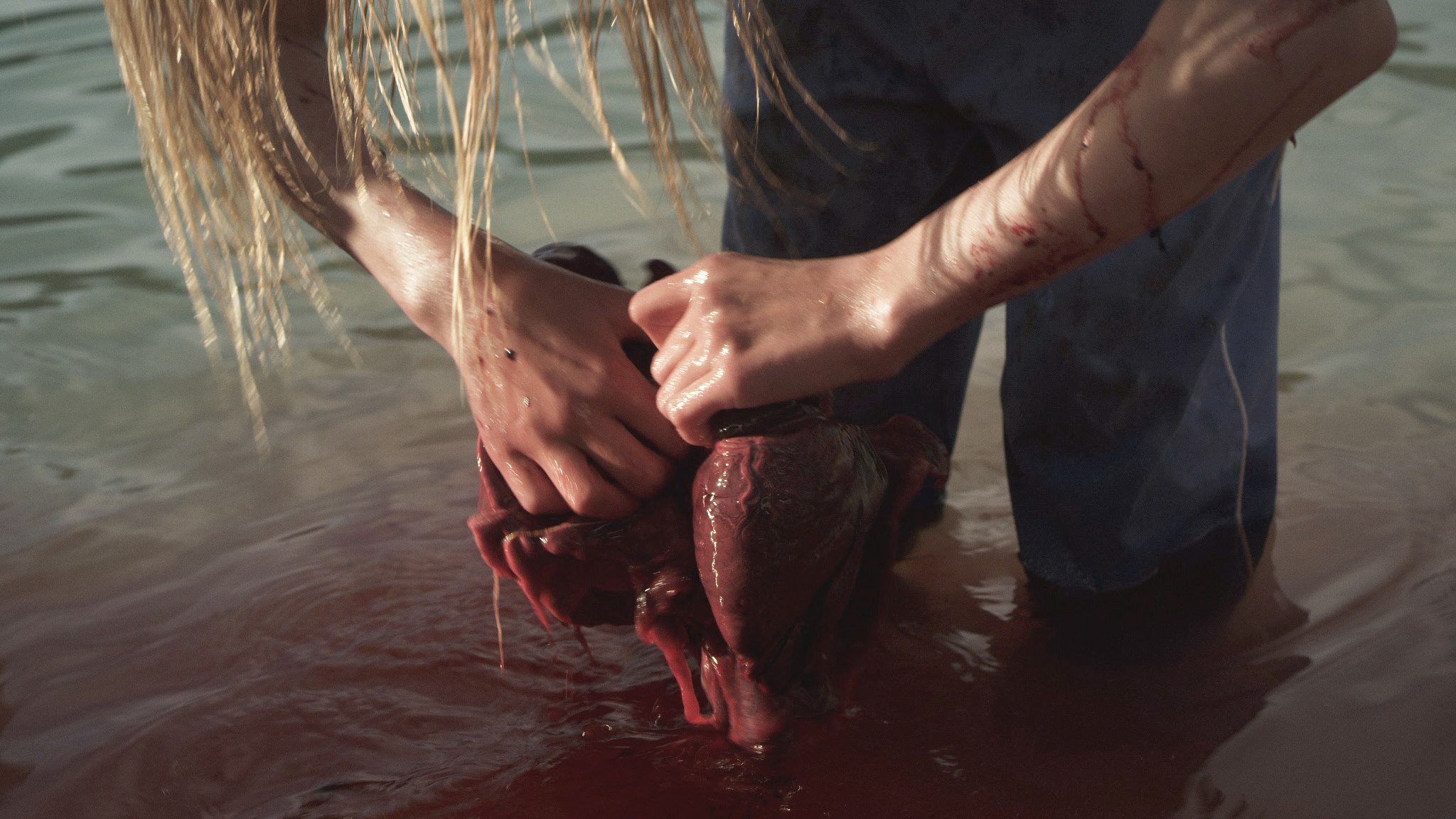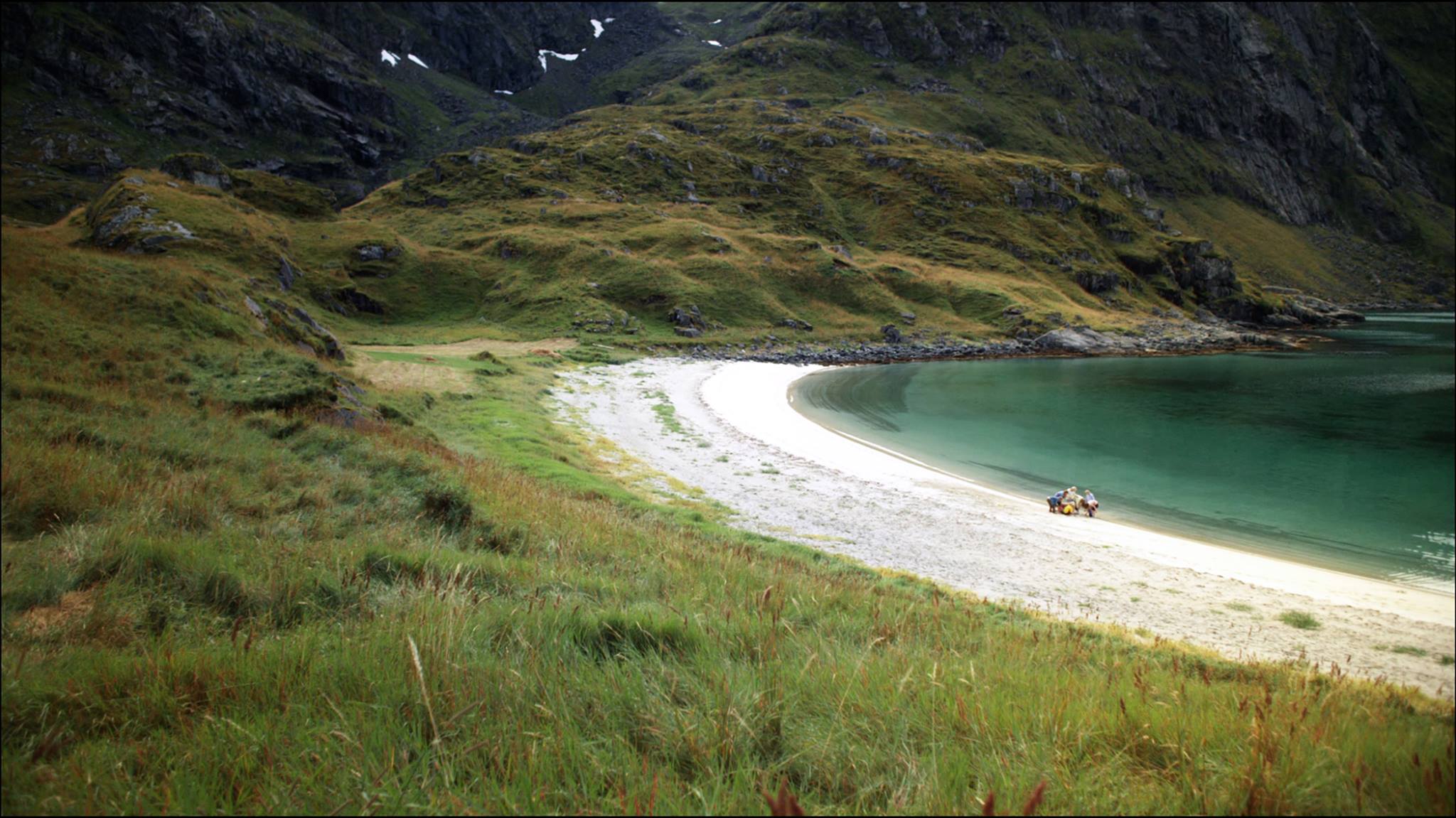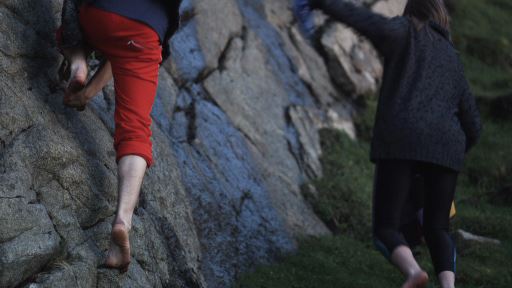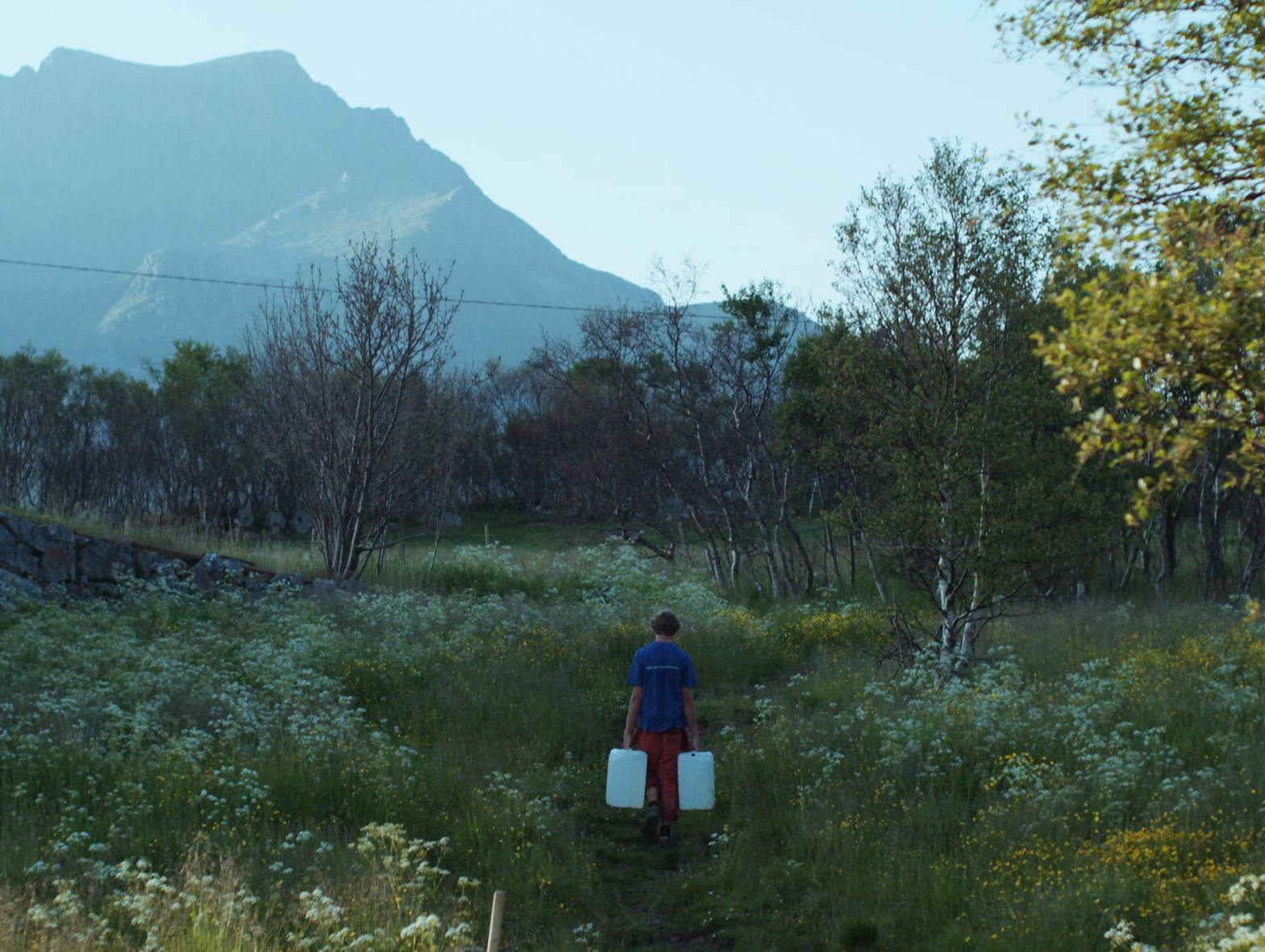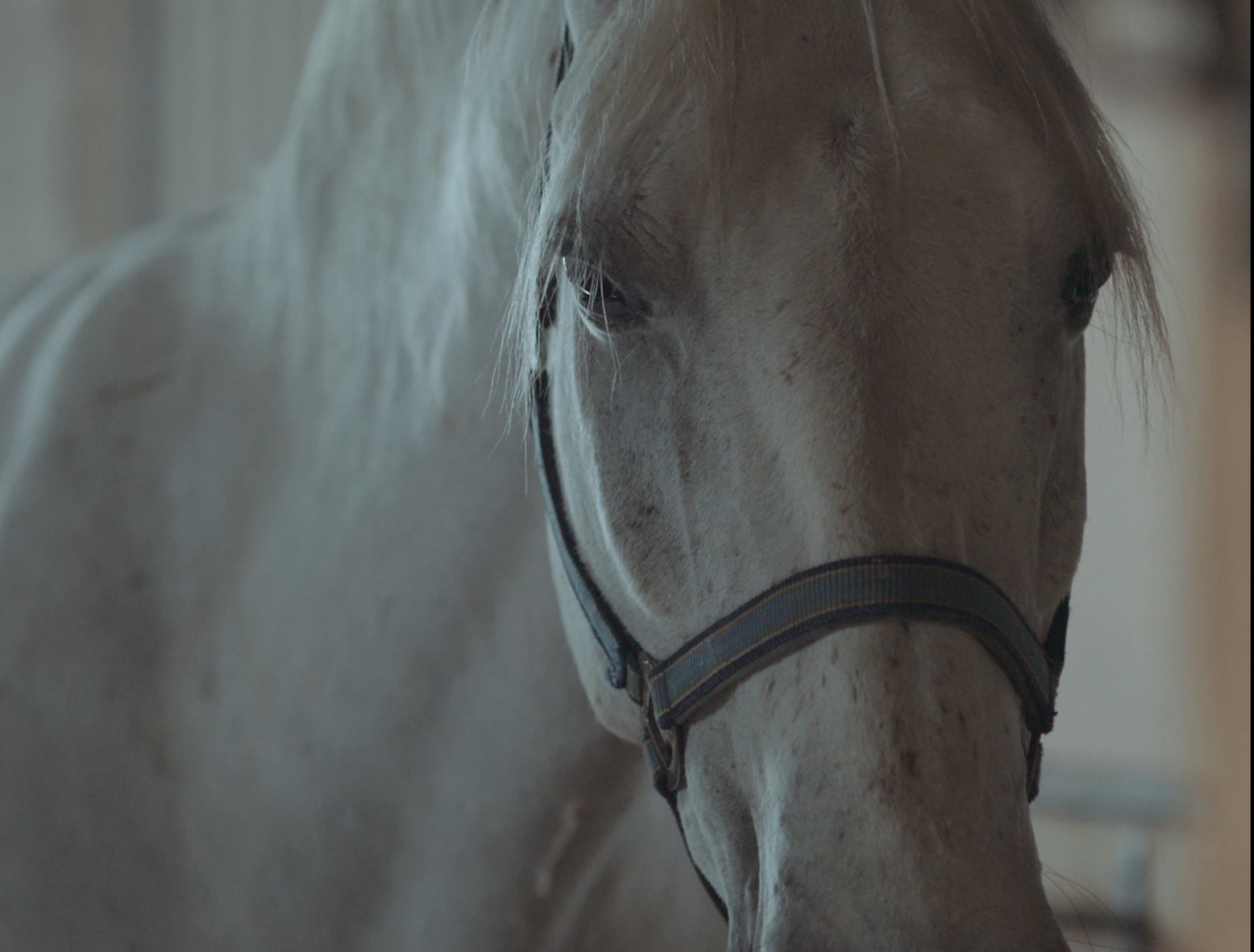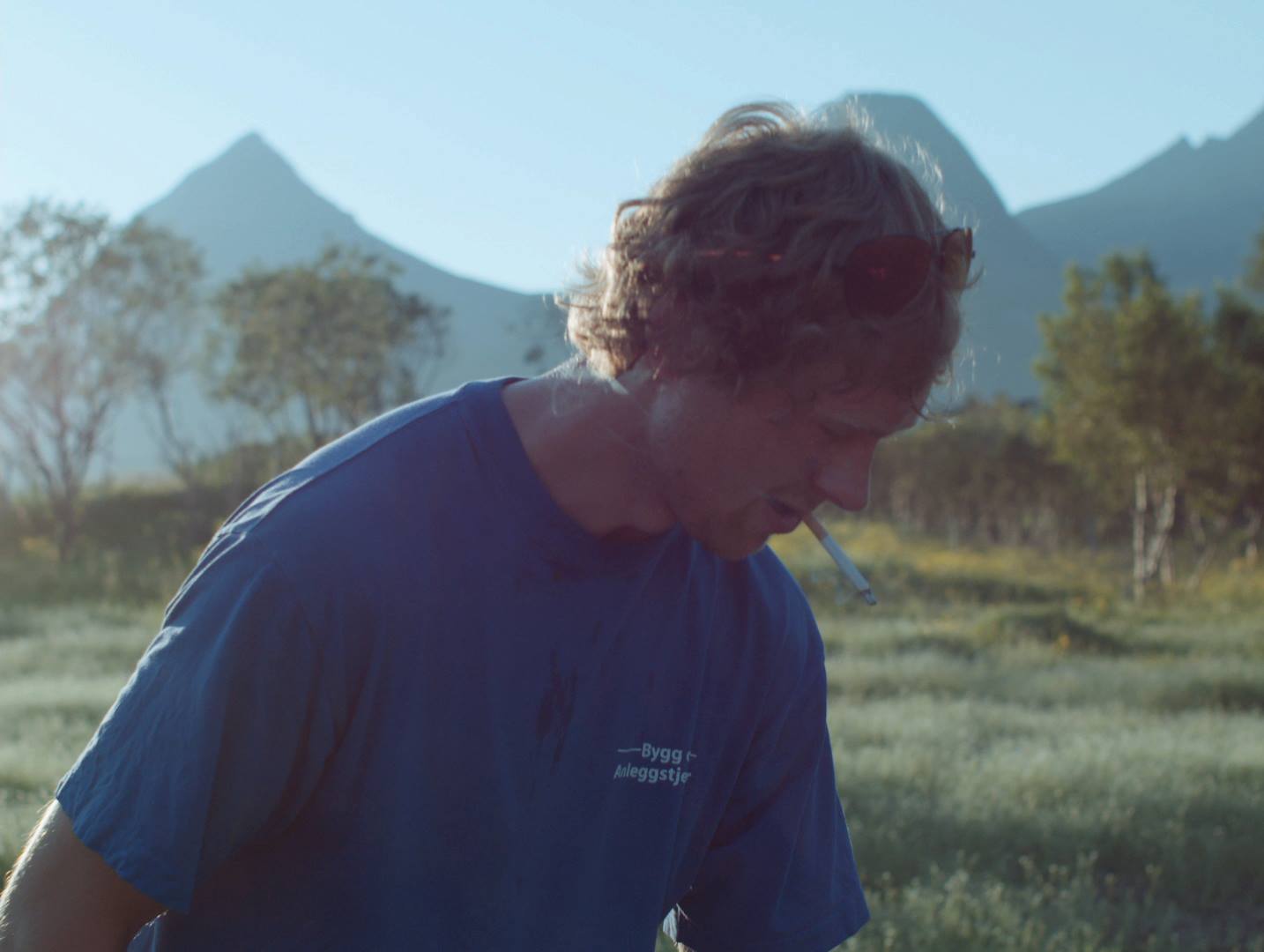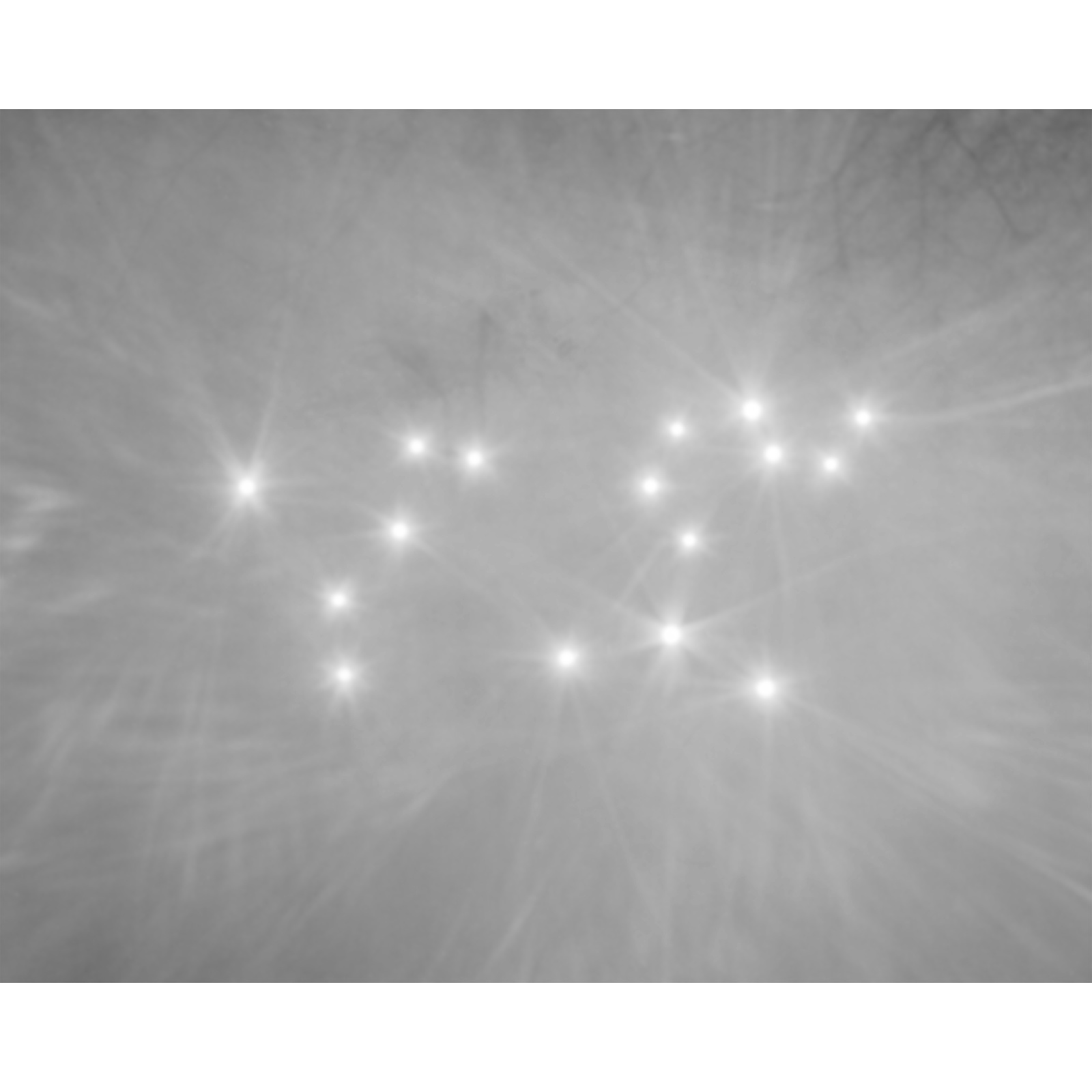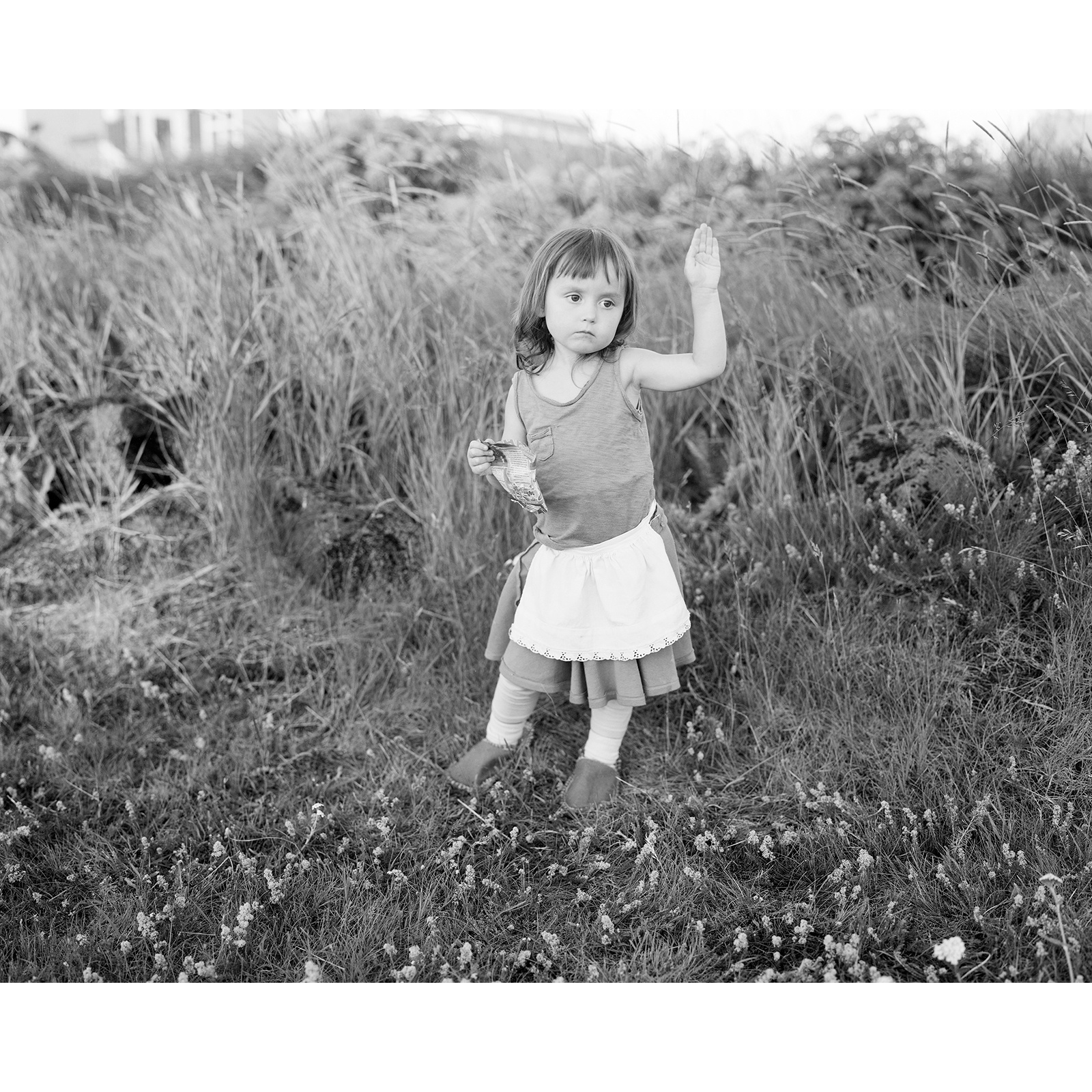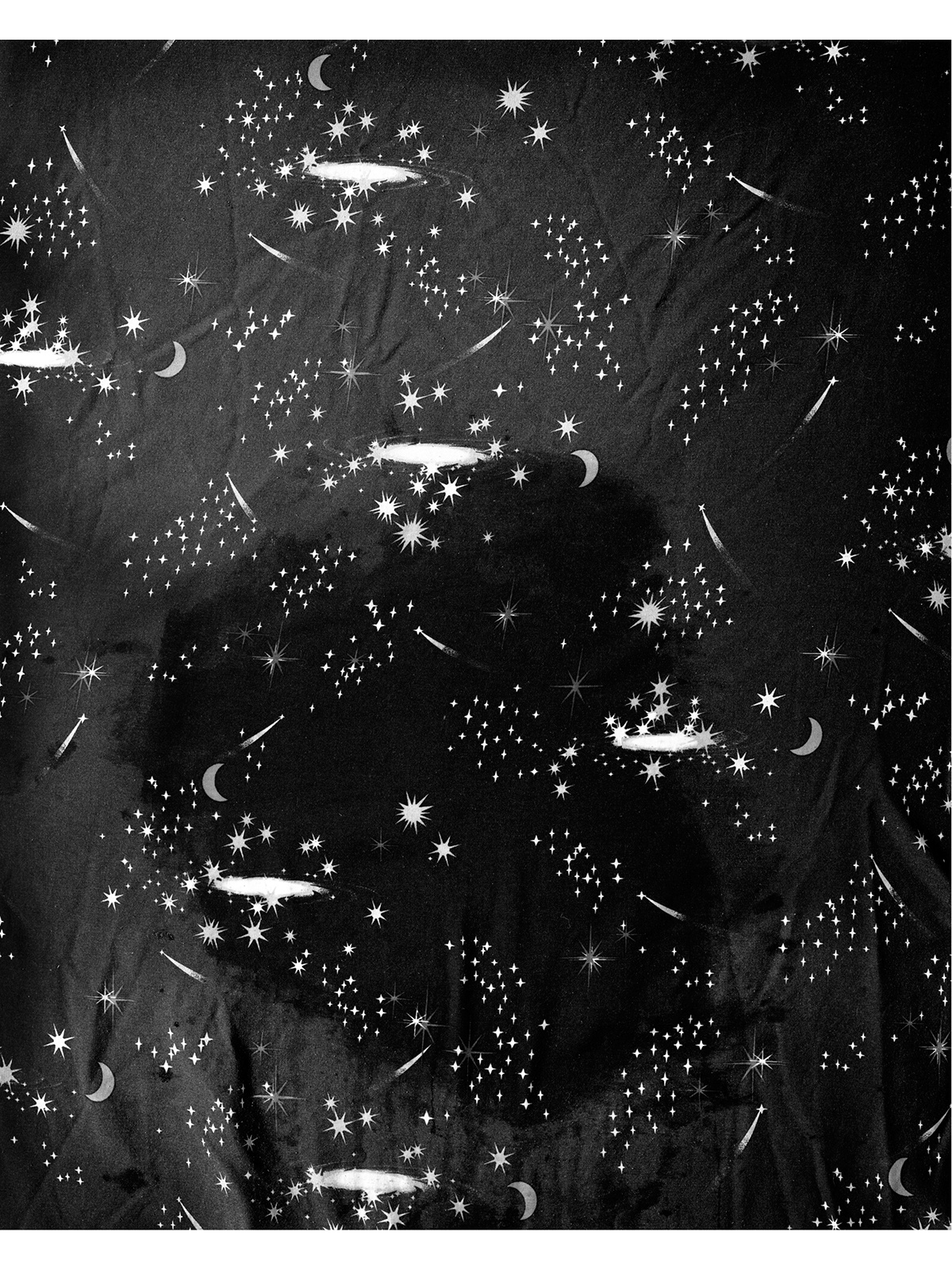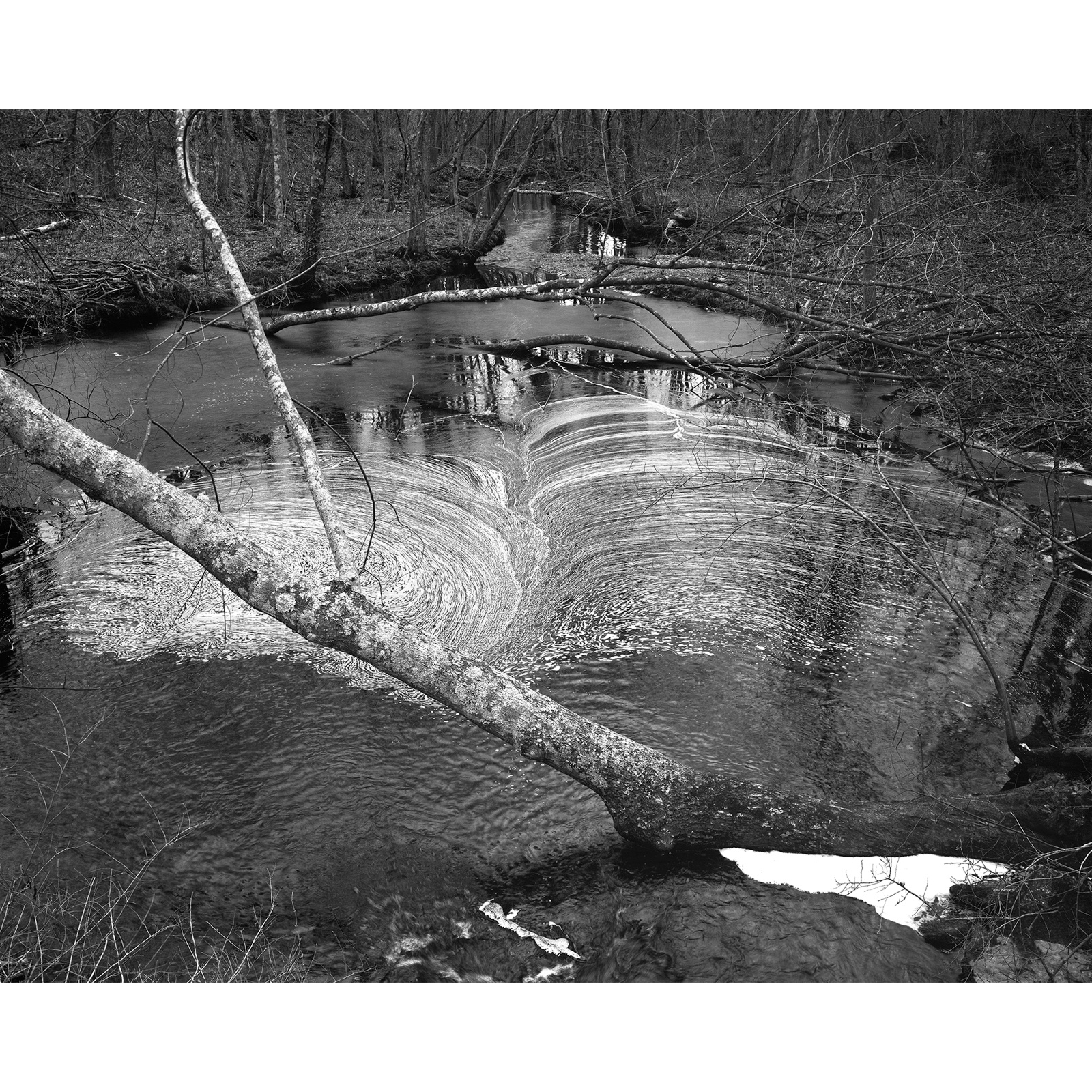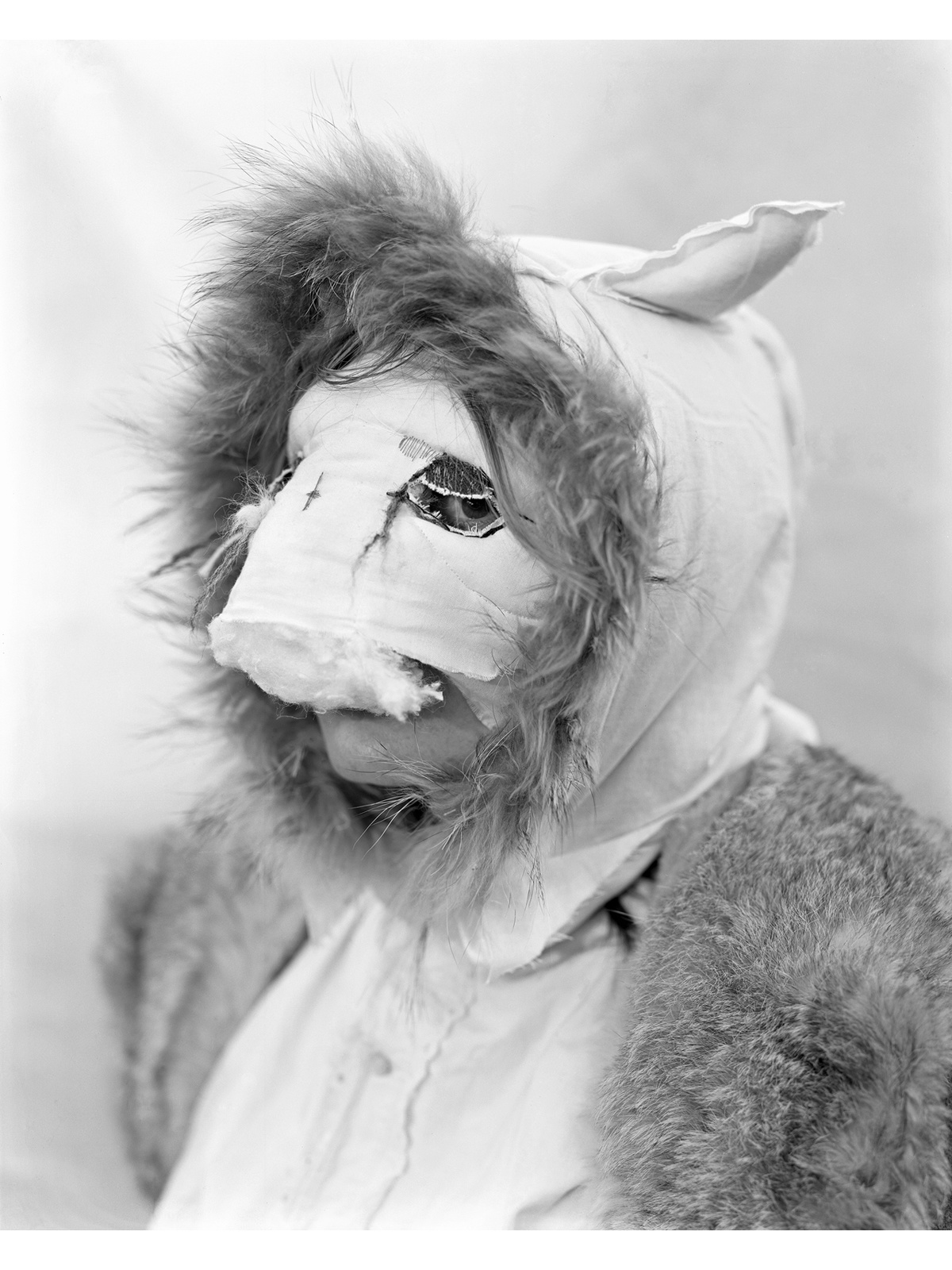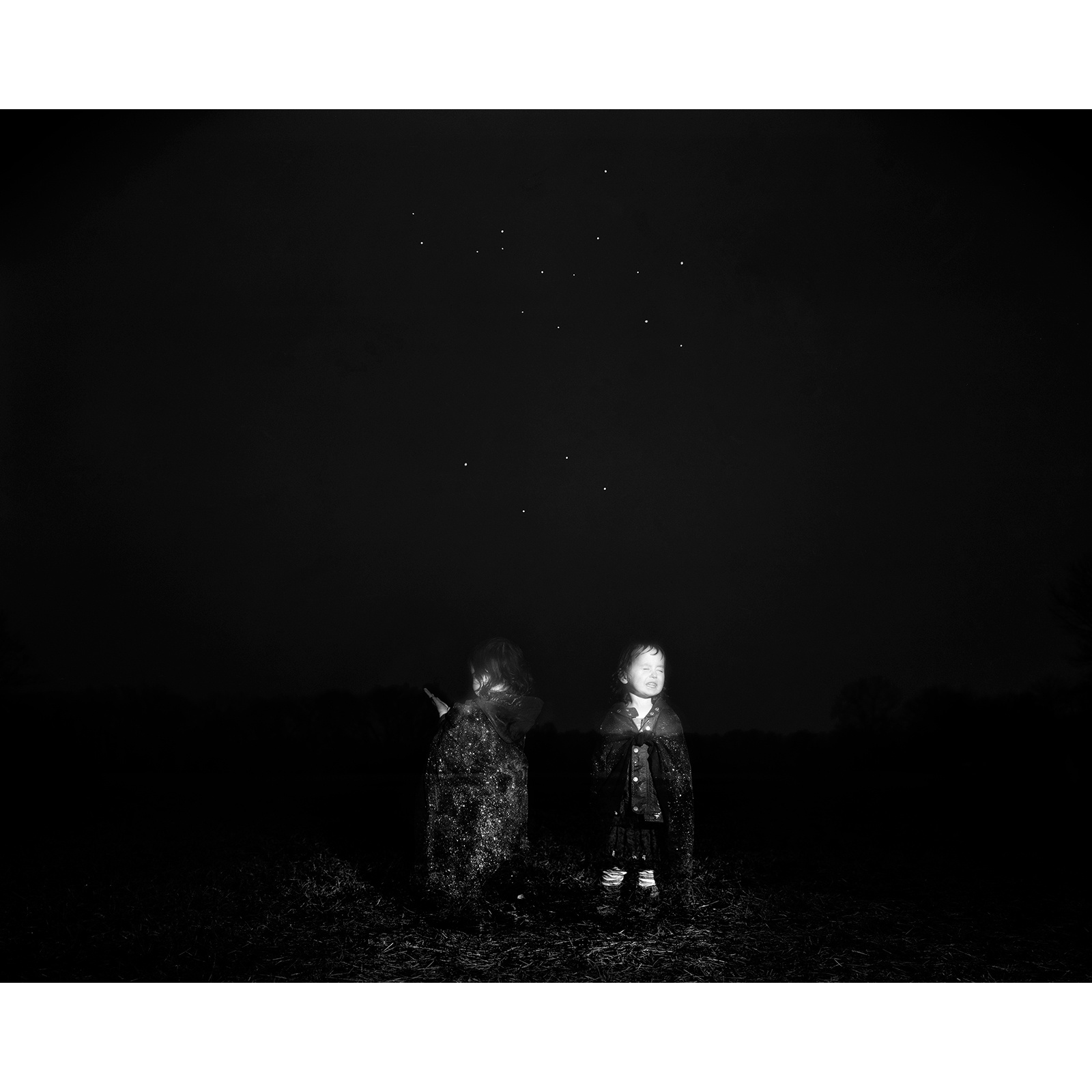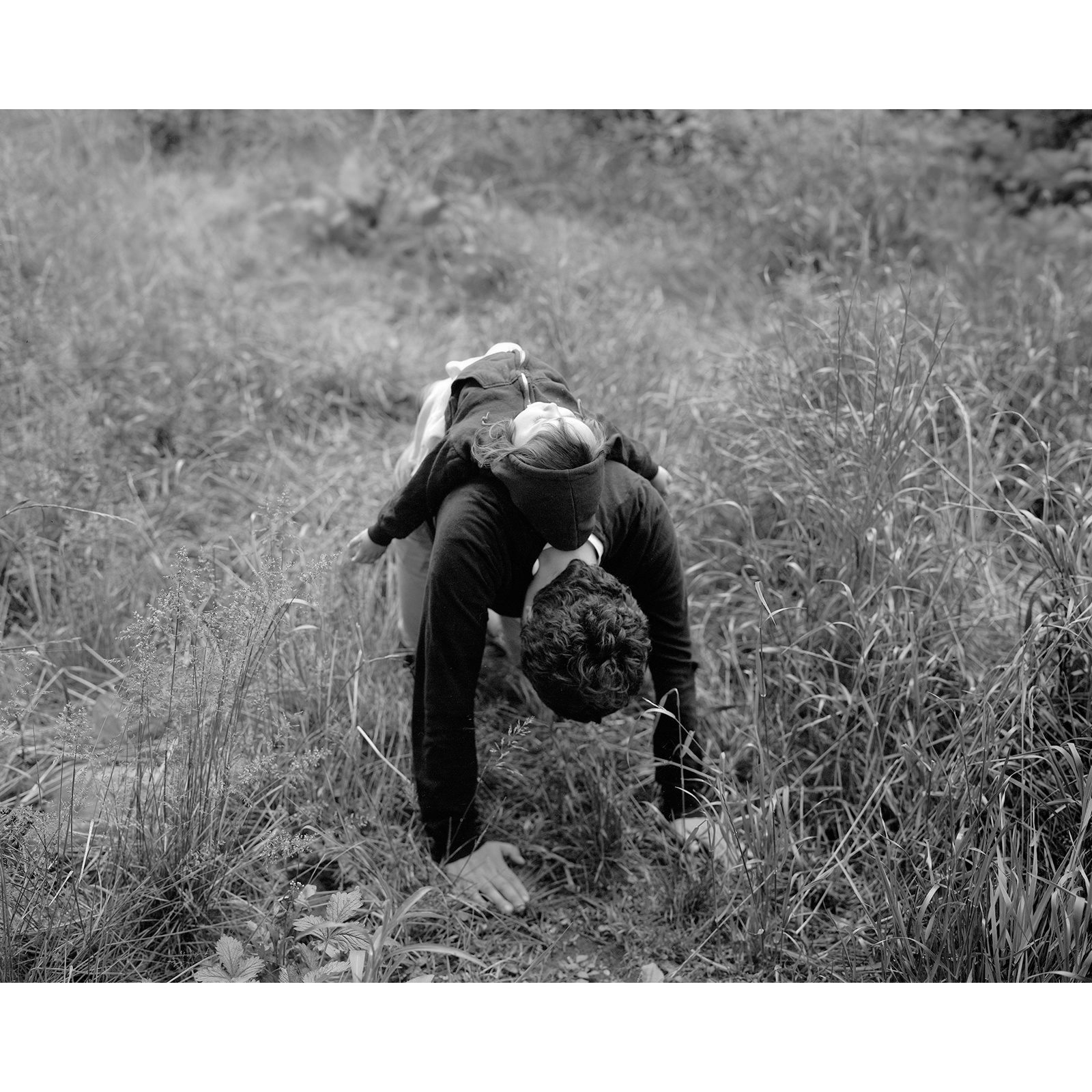Albert Grøndahl
Artist Feature
Every week an artist is featured whose single image was published by Der Greif. The Feature shows the image in the original context of the series.
Acacia Johnson - Polaris
Apr 01, 2015
‘Polaris’ is an exploration of otherworldly occurrences in the wilderness of the Far North. Traversing remote landscapes in Alaska and Iceland by foot, alone or with my family, I seek moments that seem to fall away from reality around the edges, into another realm. Alone on these journeys, I contemplate how the dynamic contrasts and fleeting elements of the Far North impart a heightened sense of being alive, and reflect upon the peculiar combination of wonder, fear, and respect that the landscape invokes. Polaris, the North Star, functions as a metaphor for the constancy of magic that I perceive in an environment that is otherwise in constant flux. For more images of Polaris head over to Acacia's website: acaciajohnson.com
Artist Blog
The blog of Der Greif is written entirely by the artists who have been invited to doing an Artist-Feature. Every week, we have a different author.
Published in:
»A Process – Ein Prozess«
Under The Same Stars
Apr 08, 2015 - Acacia Johnson
For my last day of guest blogging, I thought I would take the opportunity to share a few images from the latest project I'm working on. I am currently living in Canada on a Fulbright grant, which allowed me to spend this last winter living in a small town on the north of Baffin Island in the Canadian Arctic. To summarize, my original idea was to be there throughout the full 3 months of winter darkness, during which time I would try to learn as much as possible about people's relationship to the Arctic winter landscape, and make photographs. So, with rather little idea of what awaited me, I flew north on November 1st of last year - five days before the sun set for the winter - and returned to Toronto a month ago, about three weeks after the return of the sun. It is difficult to write about, at this point. The experience was unfathomably rich - I learned more than I ever anticipated I could, and I think it changed me deeply. Yet it is both too recent, and somehow inaccessible, in my mind. I can't see much in the photographs yet aside from my own associations with them, but this is normal. It takes time. Ideally, I would give myself about a year - or at the very least, a few months - to sort of decompress and mentally process the experience, separate myself from the photographs, and then return to them with fresh eyes and a clearer perspective. However, life does not always allow these sort of luxurious timeframes, and to my equal delight and bewilderment, I will be presenting a selection of images in a print exhibition in Ottawa in two and a half weeks! So, ladies and gentlemen, I present to you now several images from UNDER THE SAME STARS, an exhibition exploring the idea that across the international spectrum of the Circumpolar North, we are all tied together by our shared experiences within the Arctic landscape. The show will be on view from April 22nd-24th in downtown Ottawa, and will be the first of several international exhibitions as this project develops further over time. This is all made possible by the Fulbright Canada-RBC Eco-Leadership Program, and presented in affiliation with Fulbright's Arctic Initiative. If you're curious to hear more about my time in the Arctic, you can take a look at this blog post I wrote for Fulbright a few months ago. Well, that's all for now! Thanks to Der Greif for this opportunity, it's been wonderful to take part. Warmest wishes from Toronto!
Forest Kelley
Apr 07, 2015 - Acacia Johnson
Today I'd like to share with you the work of Forest Kelley, who was a graduate student at the Rhode Island School of Design while I was studying there. The images I've shared here are from Kelley's ongoing series Michael, which investigates the life of his uncle, a gay man and artist who committed suicide in 1985, just as HIV/AIDS was entering the gay male consciousness. He writes of the project: "Through the series Michael, I associate myself with the history of homosexual men living in the epoch between the Stonewall Uprising in 1969 and the death of Rock Hudson by AIDS in 1985. More specifically, I trace the experiences of my uncle Michael, a gay man and artist whose adult life was bookended by these landmark events in queer history. Michael was found dead at the base of a rock ledge—a presumed suicide—on June 14th, 1985, shortly after the first test for HIV antibody was licensed by the Food and Drug Administration in March 1985. However, circumstantial evidence is of little consolation to those who live in the wake of untimely passing. This work is less concerned with finding answers; its preoccupation is to contend with the unknowable, to illustrate the memories, dreams, speculation, hopes, and fears that continue to resonate. It is an attempt to do exactly what I cannot: to be alive within all of the trappings of another's subjectivity—to illustrate internal images with external ones." Over the years I studied parallel to Kelley, I saw this project evolve continuously, but it wasn't until I saw him actually present on his work, and his process, that I understood how thoroughly, and tirelessly, he pushed deeper into his exploration of his subject over a period of many years. His dedication to learning as much as possible about this period in history - and the details of Michael's life - really made an impression on me. Often as artists (and especially as art students!) we are encouraged to push it further, expand and explore deeper into our subjects, and this is a project that reminds me what can happen when an artist does that really well. Kelley seemed to be constantly traveling to make new images, and the displays of his work - stunning, vivid 40x50 prints, often without glass - often incorporated sculptural elements as well. The selection of images above showcase only a small part of Kelley's impressive series, so please visit his website to see the work in its entirety.
Camilla Figenschou
Apr 04, 2015 - Acacia Johnson
"A group of children are taken on a trip to a beach. While separated from adult supervision, they discover a stranded porpoise. It is dead. They open it up." So reads the plot summary of "To Open, To See," a short film by Norwegian artist and filmmaker Camilla Figenschou. The first time I saw it, at a film festival in Tromsø, I didn't know quite how to react. How I was supposed to react. The film hummed with the sun-struck tension I knew of northern summer nights, brimming with some undercurrent I couldn't quite put a finger on. You knew it when you saw it, and it moved into you. Time passed, and years later, the film has grown, strengthened, and blossomed in my mind. It hasn't lessened its grip since. The images I am sharing with you today are from three of Figenschou's films - "The Beginning of No Night" (15 minutes, 2010), "To Open, To See" (15 minutes, 2012) and a feature-length film titled "Bow and Arrow", which is currently in production. The subtle intensity of the films I've seen - powerfully understated, perhaps, is a fitting description - has had more lasting impact on me than I ever bargained for, and I think about them almost daily. Last summer I paid a visit to the set of "Bow and Arrow" in northern Norway, and to enter Figenschou's workspace was like entering another world. Arriving at the edge of a beach where filming was underway, we found ourselves speaking in hushed whispers. "Everything is happening organically," I remember someone whispering. "It's happening by itself." The air was tense with something that could only be described as magic, as the midnight sun wound its circles overhead. It is difficult to write about the films without giving them away, so I highly suggest you take the opportunity to seek them out yourself. While "To Open, To See" has recently gained significant recognition, Figenschou remains rather detached from the fast pace of the film industry, residing primarily in a small town in the Lofoten Islands (I admire this about her). While she doesn't have a website, you can nevertheless find her work if you know where to look. "To Open, To See" is available as a part of the "Norwegian Shorts 2013" on the Norwegian Film Institute's website, and "The Beginning Of No Night" is available here. Otherwise, be on the lookout for her name at film festivals in the upcoming years.
Scott Alario
Apr 03, 2015 - Acacia Johnson
The first artist I'd like to share with you is Scott Alario, whose magical, heartfelt photographs create a mythical world around his experience of fatherhood. Shot on an 8x10 view camera, Alario's images are a dreamy mix of formal family work and a foray into the ecstatically magical universe perceived by his five-year-old daughter. His projects Our Fable and What We Conjure walk the line between documentary and fiction, where image-making functions as a way to connect with his children. I often perceive fatherhood to be an underrepresented theme in photography, and Alario's work, which he explains is motivated by his fear of failing as a father, provides a perspective that is seldomly addressed. If indeed the key to remaining a photographer for life is to photograph your life itself, Alario's work is a constant reminder to me of how successful and astoundingly beautiful that can be. I can't help but be hit anew with admiration for his command of the camera, either, remembering that it is shot on 8x10. As I grow increasingly interested in photographing people, this is an artist whose work I find myself returning to time and again for inspiration. For more on Alario's work and process, feel free to read these interviews on Vice and Time Lightbox, and make sure to visit his website to view the series in their entirety.
Following Fear: The Making of ‘Polaris’
Apr 02, 2015 - Acacia Johnson
href="https://dergreif-online.de/www/wp/wp-content/uploads/2015/03/dyrholaey_2.jpg"> Hello, readers of Der Greif! It's a pleasure to be invited to share some ideas with you this week. It's suitable that my involvement with Der Greif was through their exhibition "A Process", because it's the idea of process - what goes on behind the scenes, and into the making of the work - that unites what I would like to share with you.
Der Greif asked me to share some images from my series Polaris, which I photographed over the course of travels through Iceland (mostly on foot) and the Alaskan Arctic (mostly by bushplane) in the fall of 2013. I usually work intuitively, so engaged in the act of photographing that it borders a journey into the subconscious, and it can take months - sometimes years - before I can separate myself enough to truly understand what I have made. Although an artist statement may be written, and an edit of images selected, the meaning of a body of work evolves just as surely as experience fades into memory and the clarity of retrospect.
"Let Fear Be Your Compass" was written in my sketchbook at the time I made Polaris. It was a quote from photographer Greg Miller, who had taught me to use a field camera that summer, after which I had somewhat haphazardly ordered my first ever 4x5 camera on eBay. Looking back at the photographs - serene and otherworldly as many of them are - it is strange to remember so many of these experiences as absolutely dominated by fear. Not the subtle, paralyzing, internal fears of failure or success that plague many artists, but a primal, physical fear of dying; of being destroyed by the wilderness I loved so much, which I aimed to capture. It was the first time I had truly felt threatened by the landscape, and I wonder now if perhaps it allowed me to temporarily evade the fears that really hinder art - the fear of not being good enough. In such intense situations, that fear becomes trivial.
The instances are many: hanging out the window of a bush plane, Crown Graphic in hand, in encroaching fog that prevented us from landing to get more fuel. Facing the fury of an autumn gale alone in the Icelandic wilderness, for 60 kilometers with a 40-kilo pack. Falling on glaciers, falling in rivers, hitting my head on rocks. It was all a learning experience, and throughout most of my time in Iceland I was primarily concerned with staying alive, yet the camera was there. I hardly remember making the photographs, but I hold the negatives in my hands.
The self-portrait above was taken on my last night in Iceland - I would return to the US in a wheelchair the next day. Self-portrait at Defeat, I titled it in my mind, having not yet seen the photographs. It is strange to look at this portrait now, its quietness and composure, while I remember feeling only panic, suspecting my leg to be fractured.
Polaris was a learning experience, with its challenges falling somewhere between happenstance and accident. Although I learned some hard lessons in personal safety, it also taught me that intense experiences, with varying degrees of discomfort, can be helpful in distracting you for long enough to forget the internal fears that interfere with artmaking. The trick is to somehow do it safely.
I know that many artists work, somehow, together in careful collaboration with fear. Photojournalists do this. Thomas Joshua Cooper does this (and if you haven't ever heard him speak, I highly recommend watching one or all of the video lectures available on the internet). You could be overwhelmed by terror, but then you see the photograph, and the world disappears. Something else takes over. The photograph gets made.
"What is at stake here?" was a question we were often asked art school, a terrifying question that nevertheless remains wise to return to. What are you risking, in your equal chances of success and failure?
Hopefully, not your life, but are you risking anything at all, in either process or result? I hope so. Without risk - without daring to make the photographs that matter - there can be, in my mind, no forward progress. The key is to find a way to transcend the fear that inhibits artmaking, whether your tactic be adrenaline or meditation or simply throwing caution to the wind. Everyone must find a way to overcome this. Sometimes, primal fear will do.
The entire Polaris series can be found on my website.
Hello, readers of Der Greif! It's a pleasure to be invited to share some ideas with you this week. It's suitable that my involvement with Der Greif was through their exhibition "A Process", because it's the idea of process - what goes on behind the scenes, and into the making of the work - that unites what I would like to share with you.
Der Greif asked me to share some images from my series Polaris, which I photographed over the course of travels through Iceland (mostly on foot) and the Alaskan Arctic (mostly by bushplane) in the fall of 2013. I usually work intuitively, so engaged in the act of photographing that it borders a journey into the subconscious, and it can take months - sometimes years - before I can separate myself enough to truly understand what I have made. Although an artist statement may be written, and an edit of images selected, the meaning of a body of work evolves just as surely as experience fades into memory and the clarity of retrospect.
"Let Fear Be Your Compass" was written in my sketchbook at the time I made Polaris. It was a quote from photographer Greg Miller, who had taught me to use a field camera that summer, after which I had somewhat haphazardly ordered my first ever 4x5 camera on eBay. Looking back at the photographs - serene and otherworldly as many of them are - it is strange to remember so many of these experiences as absolutely dominated by fear. Not the subtle, paralyzing, internal fears of failure or success that plague many artists, but a primal, physical fear of dying; of being destroyed by the wilderness I loved so much, which I aimed to capture. It was the first time I had truly felt threatened by the landscape, and I wonder now if perhaps it allowed me to temporarily evade the fears that really hinder art - the fear of not being good enough. In such intense situations, that fear becomes trivial.
The instances are many: hanging out the window of a bush plane, Crown Graphic in hand, in encroaching fog that prevented us from landing to get more fuel. Facing the fury of an autumn gale alone in the Icelandic wilderness, for 60 kilometers with a 40-kilo pack. Falling on glaciers, falling in rivers, hitting my head on rocks. It was all a learning experience, and throughout most of my time in Iceland I was primarily concerned with staying alive, yet the camera was there. I hardly remember making the photographs, but I hold the negatives in my hands.
The self-portrait above was taken on my last night in Iceland - I would return to the US in a wheelchair the next day. Self-portrait at Defeat, I titled it in my mind, having not yet seen the photographs. It is strange to look at this portrait now, its quietness and composure, while I remember feeling only panic, suspecting my leg to be fractured.
Polaris was a learning experience, with its challenges falling somewhere between happenstance and accident. Although I learned some hard lessons in personal safety, it also taught me that intense experiences, with varying degrees of discomfort, can be helpful in distracting you for long enough to forget the internal fears that interfere with artmaking. The trick is to somehow do it safely.
I know that many artists work, somehow, together in careful collaboration with fear. Photojournalists do this. Thomas Joshua Cooper does this (and if you haven't ever heard him speak, I highly recommend watching one or all of the video lectures available on the internet). You could be overwhelmed by terror, but then you see the photograph, and the world disappears. Something else takes over. The photograph gets made.
"What is at stake here?" was a question we were often asked art school, a terrifying question that nevertheless remains wise to return to. What are you risking, in your equal chances of success and failure?
Hopefully, not your life, but are you risking anything at all, in either process or result? I hope so. Without risk - without daring to make the photographs that matter - there can be, in my mind, no forward progress. The key is to find a way to transcend the fear that inhibits artmaking, whether your tactic be adrenaline or meditation or simply throwing caution to the wind. Everyone must find a way to overcome this. Sometimes, primal fear will do.
The entire Polaris series can be found on my website.


